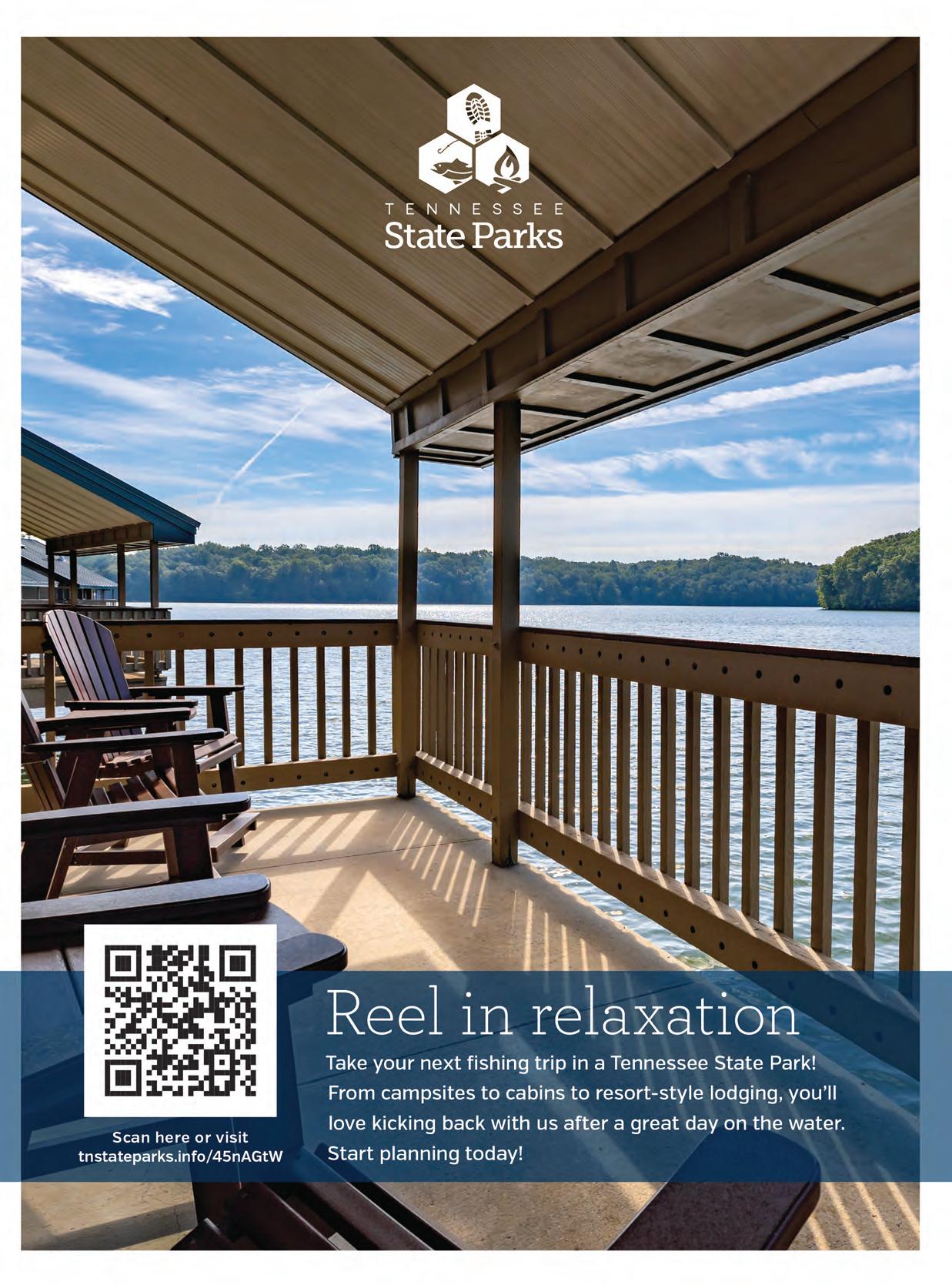

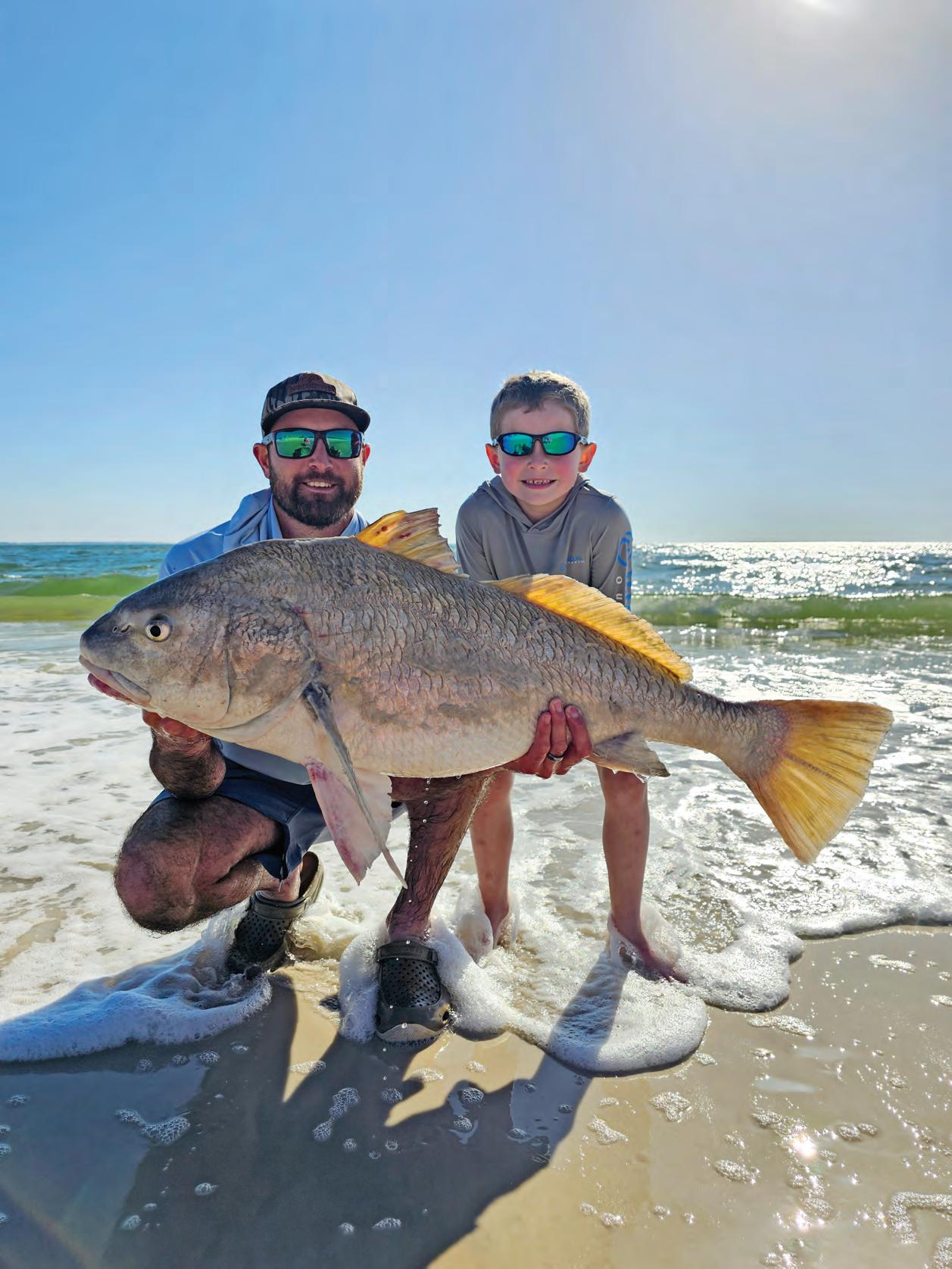
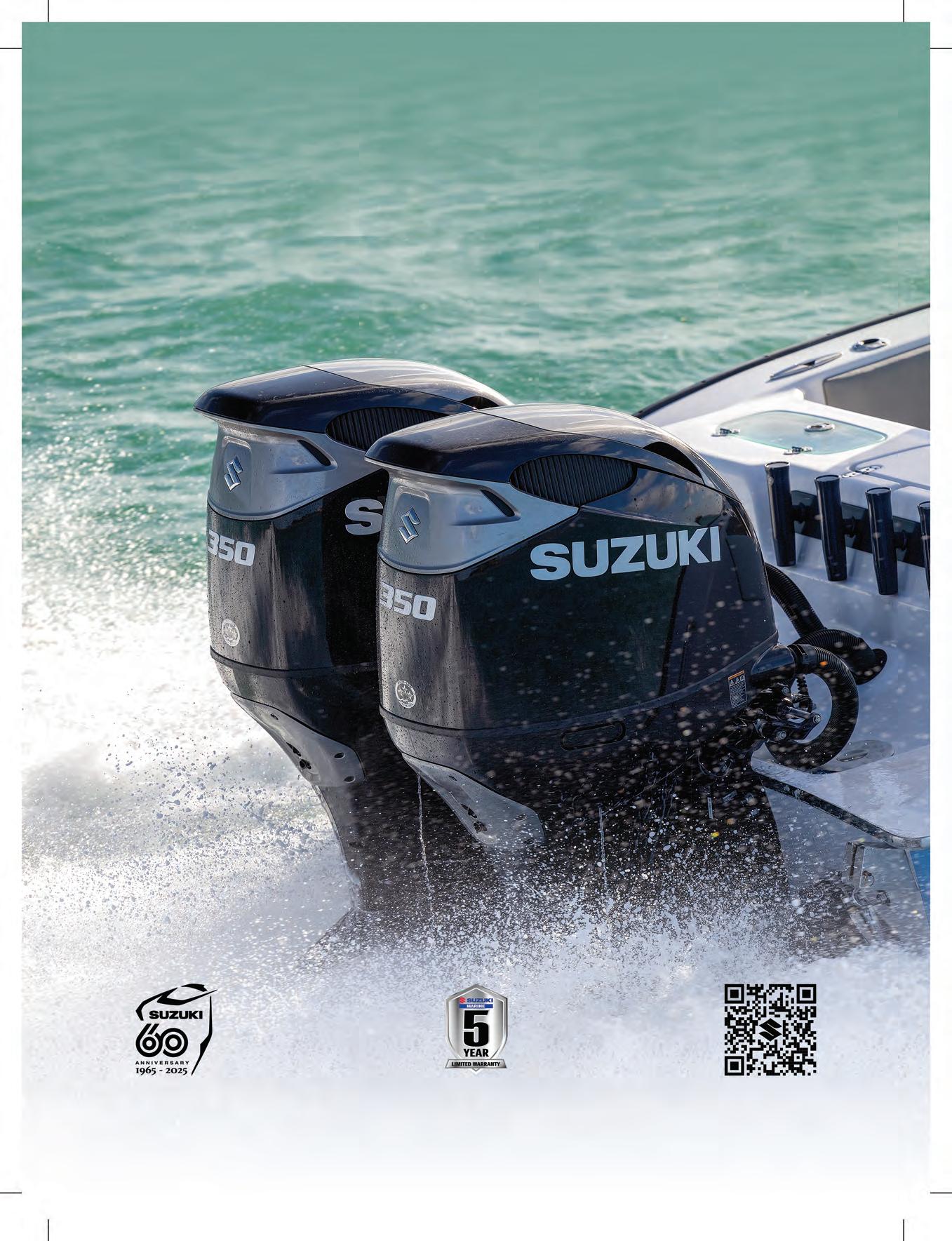

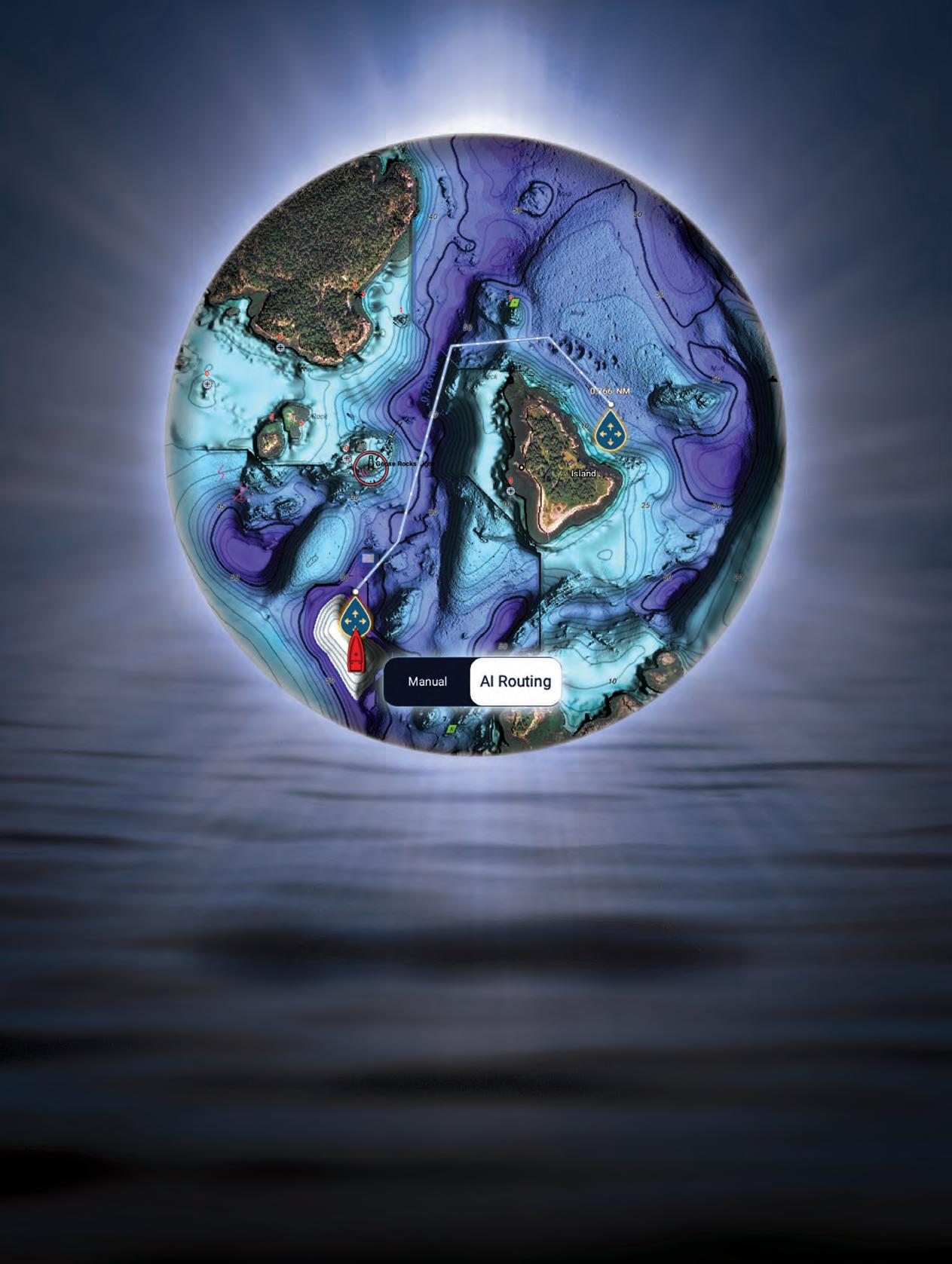
You want AI Routing! Let TZ MAPS with AI Routing make route planning a snap. Don’t take our word for it. Scan here to see for yourself how easy it is!


















You want AI Routing! Let TZ MAPS with AI Routing make route planning a snap. Don’t take our word for it. Scan here to see for yourself how easy it is!











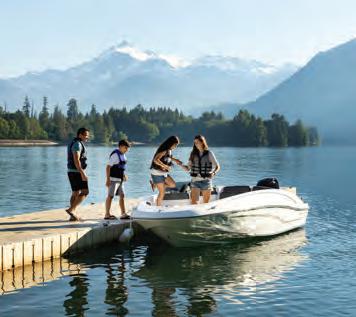






Embarking on the open water is an exhilarating experience, flled with the promise of adventure and relaxation. Whether you’re a seasoned sailor or a weekend cruiser, protecting your vessel with proper insurance is not just a choice—it’s a necessity. Explore the reasons why every boat owner should prioritize boat insurance for a worry-free voyage.
The open water can be unpredictable, with unexpected storms, collisions, or other potential accidents. Boat insurance can give you fnancial protection if there is damage to your vessel, providing coverage for repairs or replacement.
Accidents on the water can result in damage to other boats, docks, or even injuries to passengers. Boat insurance offers liability coverage, which can pay for damages or injuries you’re liable for while boating, up to specifed limits, and lawsuit costs if you’re sued. This includes damage you cause to another watercraft or if someone on or near your boat is injured and you’re found to be legally responsible.
Unfortunately, boat theft and vandalism are realities that boat owners face. Boat insurance has comprehensive and collision coverage that can protect you against events outside of your control, including theft and vandalism.
Accidents on the water may lead to injuries for you or your passengers. Boat insurance offers a range of optional medical payments coverage limits, helping to cover medical expenses if you are in an accident or someone is hurt on your boat, regardless of fault.
If you fnanced the purchase of your boat, most lenders require insurance coverage to protect their investment. Having boat insurance not only fulflls these requirements but also gives you peace of mind knowing that your fnancial interests are safeguarded.


Some water municipalities and marinas may require proof of insurance for docking or accessing certain areas. Boat insurance allows you the fexibility to explore different destinations without worrying about entry restrictions.
Emergency towing and assistance
Progressive boat insurance can include optional Sign & Glide® On-Water Towing coverage. If your boat is disabled or breaks down on the water, Sign & Glide® pays for on-water towing, jump starts, soft un-groundings, and fuel delivery.
Wreckage removal
If your boat sinks, Progressive boat insurance will cover the cost of removing your boat from the water (if removal is legally required).
Investing in boat insurance is not just about protecting a valuable asset; it’s about safeguarding the memories, experiences, and joy that come with your on-water adventures. Don’t let unforeseen circumstances disrupt your journey—navigate with confdence, knowing that Progressive boat insurance has you covered. Ensure a smooth and worry-free voyage, because when it comes to your boat, peace of mind is the ultimate luxury.
Scan to get a quote in as little as 4 minutes
learn more.




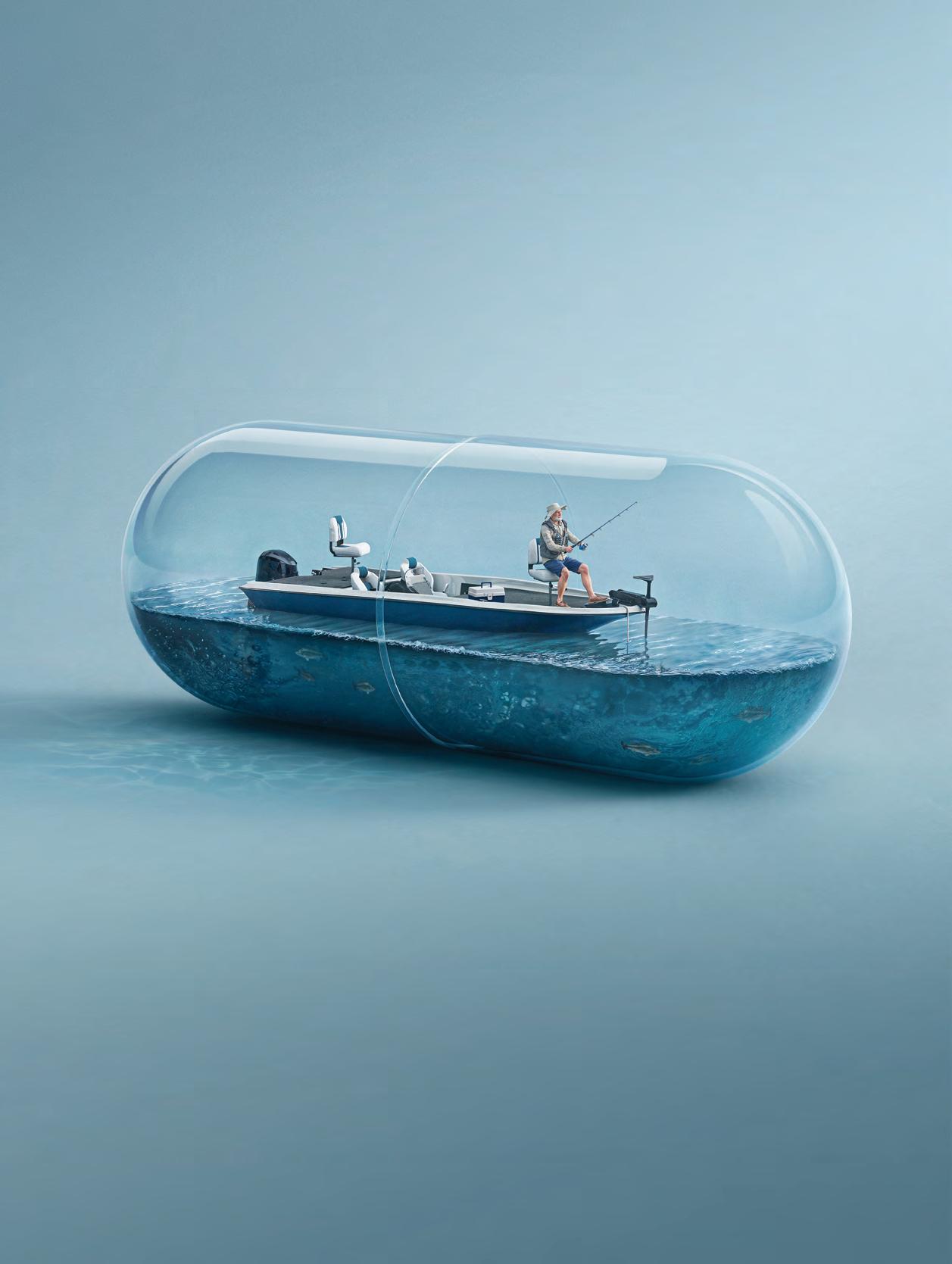
















Tim Barefoot
Since the endangered, gag grouper and American red snapper are o!-limits this month, it would be a good time to go deeper and/or change up your tactics to target di!erent species. For example, go ahead and catch your three scamp/red grouper combo, then switch over to smaller baits and smaller circle hooks on chicken rigs to target beeliners, trigger sh grunts and seabass.
I would strongly suggest taking live pin sh from the marina for scamps and red grouper. is will accomplish two things. One, it will weed out a bunch of trash bites from smaller snappers and other bait steelers because only the sh with a mouth large enough to eat the pin sh will give it a go, and two, it will catch the older (larger) sh that o en will not bite a chicken rig and cut bait. e chicken rig with a bank sinker, and the bank sinker with a triple swivel, leader and hook have been the industry standard for many decades, but these sh have evolved and have become savvy to this method, in my humble opinion. is is the reason the Decoy Jig system is so e!ective. ey’ve never seen anything like it and it’s a clever disguise of what is really happening; the weight and bait are in one clean package, attached by a piece of %uorocarbon.

ere is one downfall to shing live pin sh on the Decoy Jig—it will de nitely get the shark bite. Sharks, like many other sh, are hardwired to eat this struggling bait attached to something else they like to eat, like a squid or a crab.
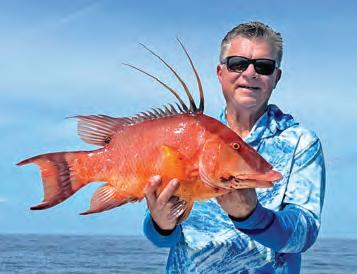
ere’s another sh I didn’t mention earlier, but this is a good time of year to target hog sh. ere are many schools of thought when it comes to catching them. Many say the chicken rig is the ultimate and, yes, there have been a lot of hog sh caught on your standard chicken rig. But this is a pretty wily species, and hard to catch for a number of reasons. Not only are they hard
to get to bite, but they pull HARD! You have to have seriously strong connections because they will test every part of your tackle. ere’s one more sh that is almost as good table fare and that’s the white jolt head porgy. Same tactics, same everything; you just gotta nd them. ey are beyond delicious. You can troll all you want, but I’ll spend my time bottom shing for the best groceries and keep the light line out back for any wahoo, dolphin, kings or tuna that may cruise by. It pays dividends to jig up live cigar minnows and live sardines on the Sabiki or just purchase them for the light line. August and September are the months that wahoo, yellow n, dolphin, sail sh— you name it—are everywhere inshore following big schools of bait, and a live cig or sardine will de nitely get the bite. I would de nitely keep a live pitch bait ready on a circle hook on piece of %uorocarbon for the sail sh that’ll swim by the boat. Keep the thumping music, cooler slamming loud everything to a minimum if you want to have a shot at getting some of these sh to swim up to the boat. Fact: You’ll see more sh near the boat when you’re quiet, otherwise they will keep their distance and you probably won’t see them, and they’ll have their guard up if they do get near the boat.
Go on, get down to the bottom or at least lower in the water column for the best groceries and keep a pretty live bait out back on the lite line for a great day of catching...not shing.
Check out more from Tim Barefoot at barefootcatsandtackle.com.

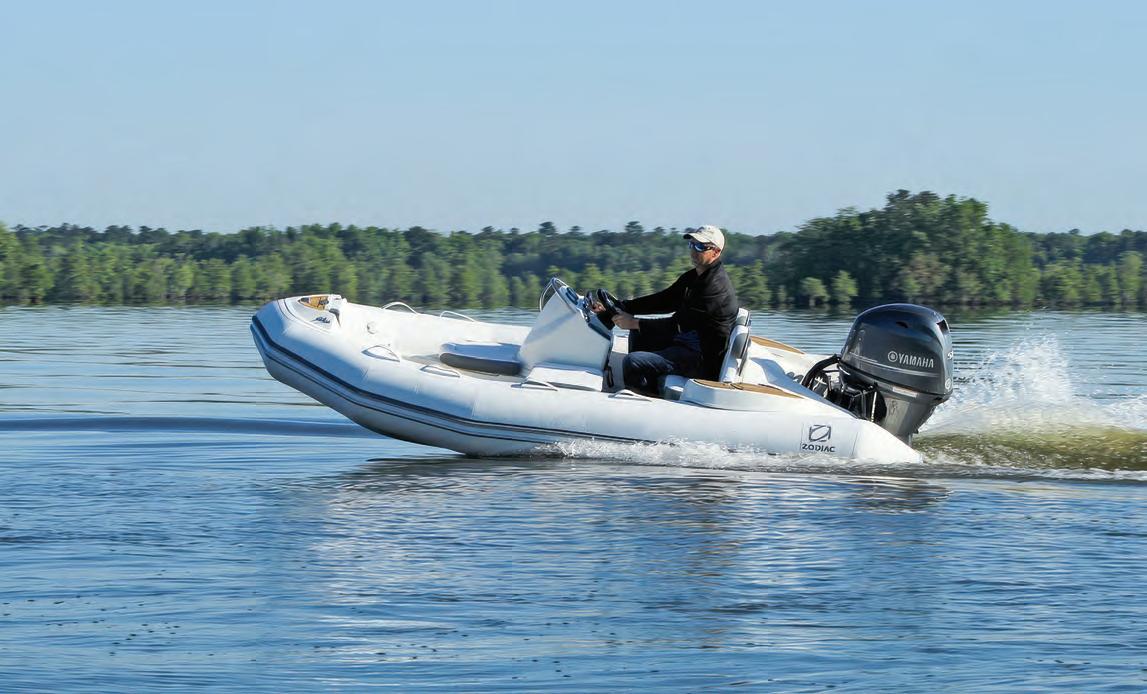
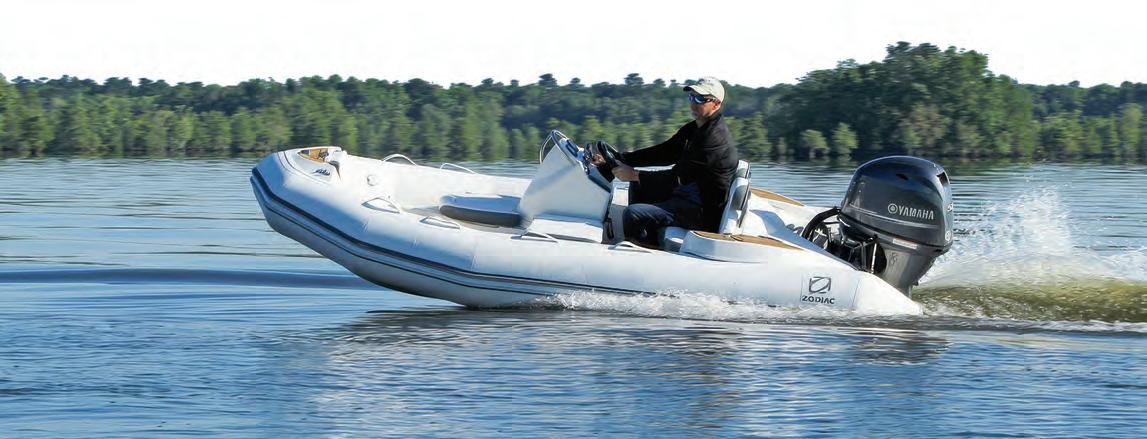

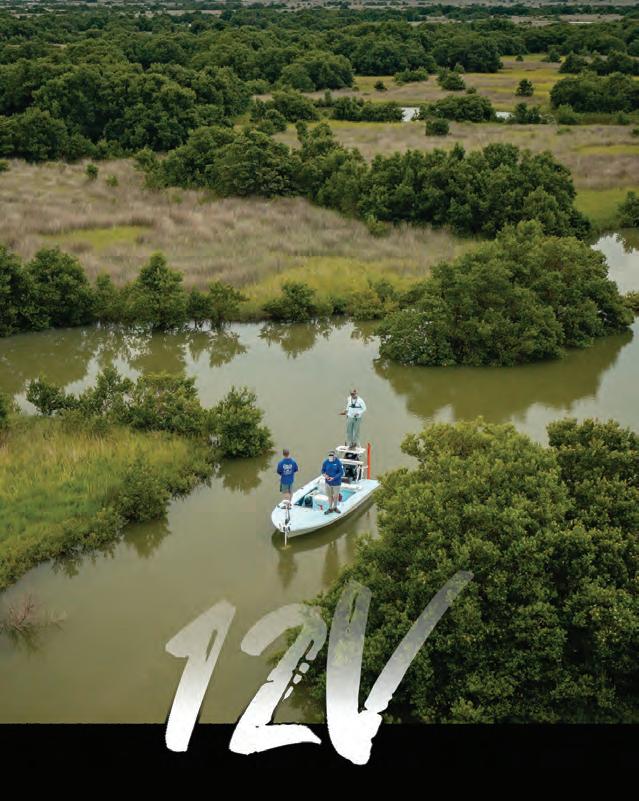
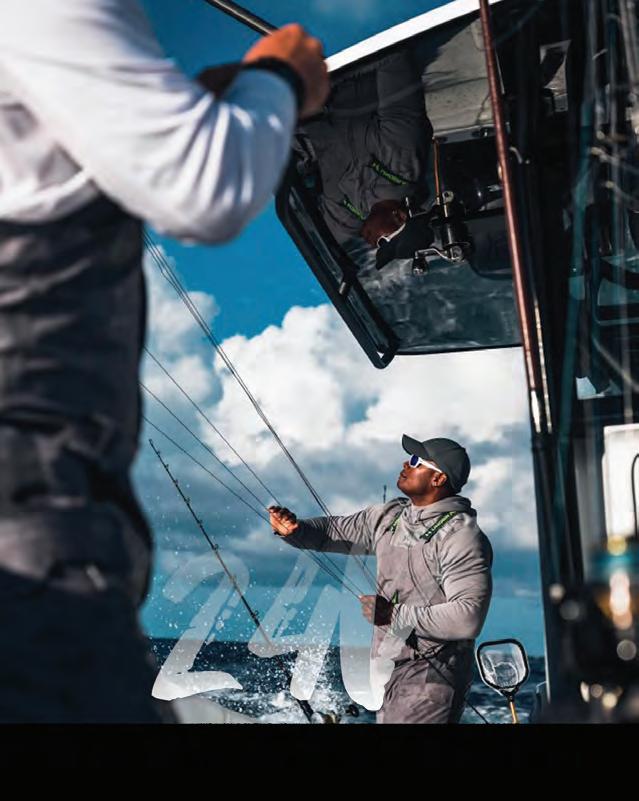




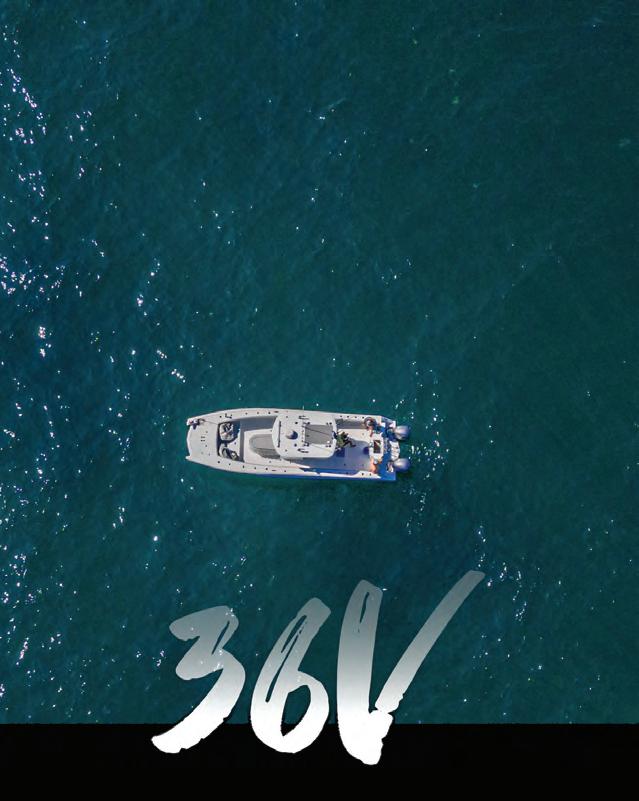


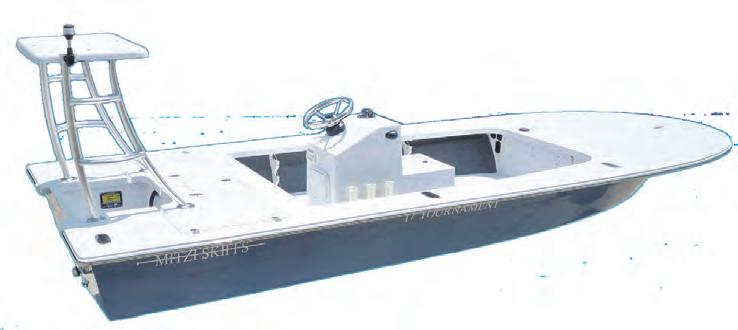

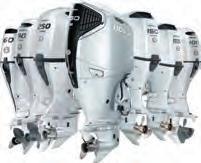
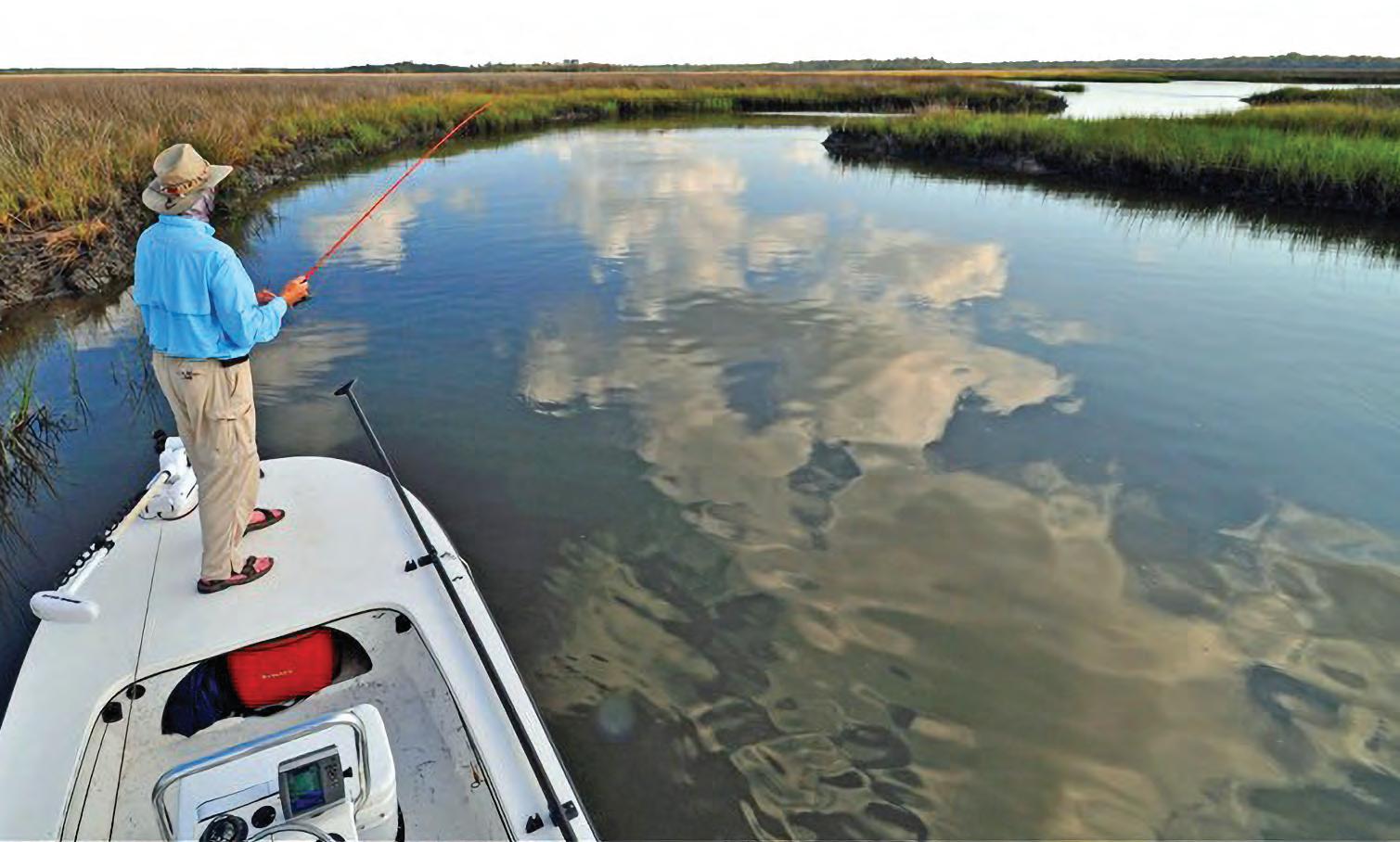
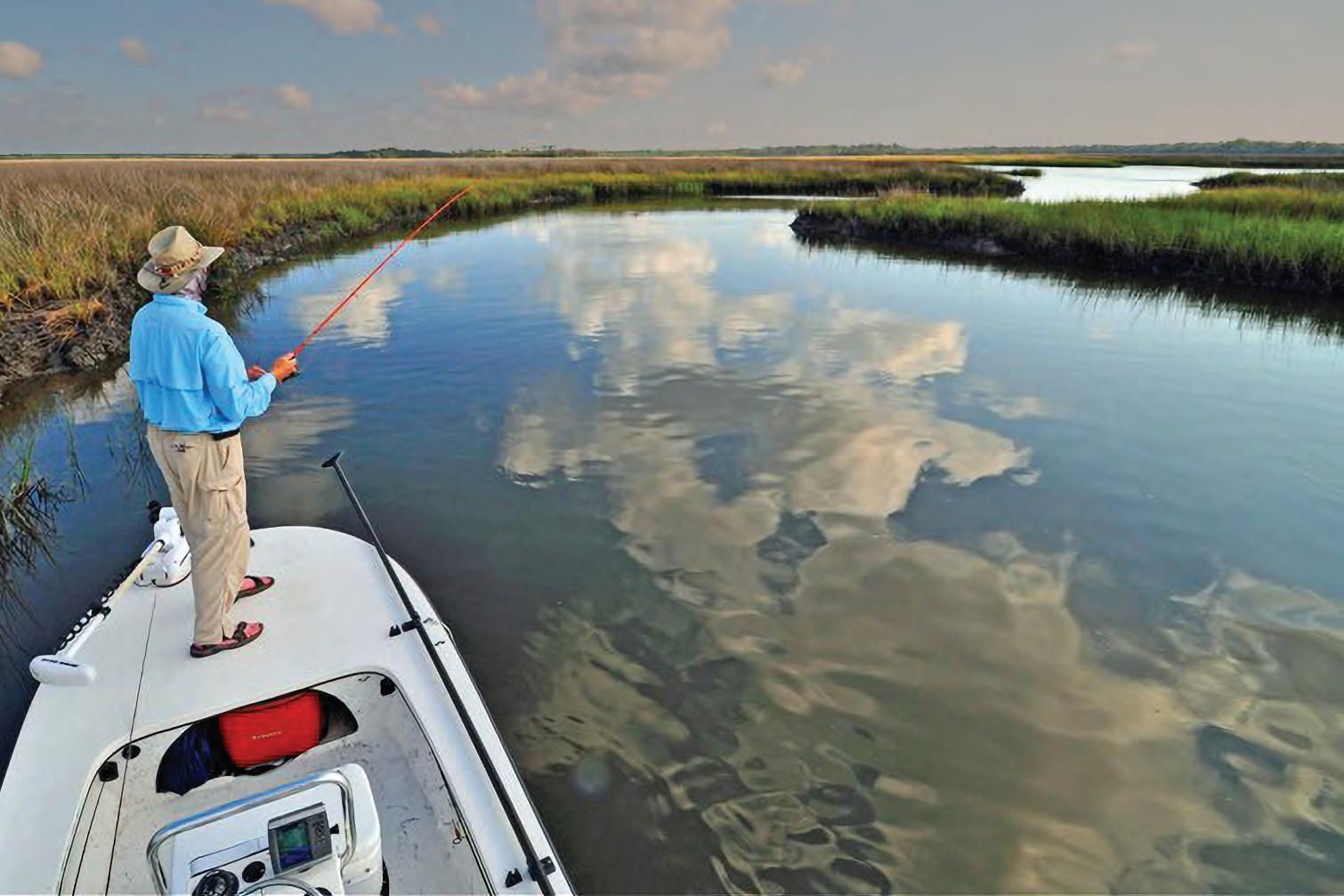
By Joe Woody
Somewhere in McDowell County, North Carolina, where the Blue Ridge Mountains lean in close and the rivers run clear enough to drink, there’s a place where sh outnumber people, and cell service is more suggestion than fact. It’s a land of steep gorges, sparkling lakes, and waters that curl through the woods like they have secrets to keep. Welcome to the triple-threat shing grounds of Lake James, the Linville Gorge, and the Catawba River — tucked into a county that doesn’t make much noise but delivers in trout, bass, and backcountry beauty.
If you’ve never heard of McDowell County, don’t worry — that just means the sh haven’t heard of you either, and your odds are still good. Whether you’re a dry-%y purist with a hip pack and a “River Runs rough It” complex or someone who likes to toss worms near pretty rocks, this corner of the Carolinas has a spot for you. Bass are stout and sassy. Trout are plentiful, and they have attitudes to match. So gas up the truck, tie on something that worked last season, and head for the hills. e shing is great, the views are even better, and McDowell County is ready to welcome you — even if the trout aren’t.
Lake James is the area’s big-water bu!et. is 6,800-acre reservoir between Burke and McDowell counties o!ers smallmouth and largemouth bass, walleye, crappie, bluegill, hybrid striped bass, and cat sh. Spring and early summer bring aggressive smallmouth to the surface from April to June. Tossing a Pop R or a Zara Spook at dawn can trigger explosive strikes. Crappie move shallow in May and June, while cat sh linger year-round, especially from fall through early spring. Bass shing is best around rocky points and submerged trees with crankbaits or so plastics. Walleye respond to trolling or jigging near the dam. If you’re a er cat sh, bring cut bait and patience. Lake James State Park has public ramps, campgrounds, showers, and picnic shelters — perfect for anglers who like their wild with a touch of comfort.
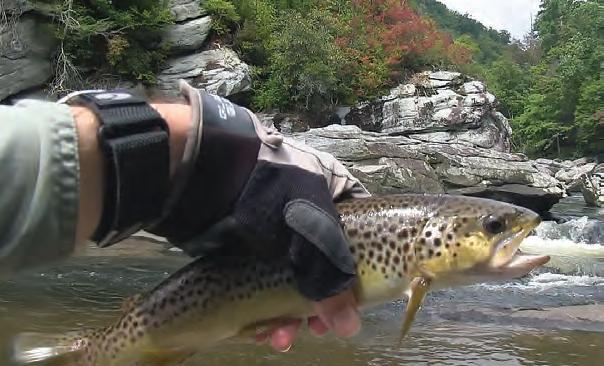
If Lake James is your comfy recliner, Linville Gorge is the rugged Adirondack chair that bites back. Known as the Grand Canyon of the East, this steep gorge is home to the Linville River, one of North Carolina’s best wild trout waters. e upper river holds wild and stocked rainbow, brook, and brown trout. Below Linville Falls, you’ll nd a backcountry adventure with native browns lurking in clear pools. Reaching prime spots requires steep descents, with some trails dropping 1,400 feet. e solitude and scenery reward every blister. Bring light tackle, stealthy casts, and plenty of water. Spring hatches bring trout to the surface, and a well-placed dry %y can tempt a wary sh. Remember your headlamp — climbing out in the dark is no fun.
Below Lake James, the Catawba River %ows cool and clear, sheltering rainbow and brown trout that grow large and wary. Float trips are ideal. An eight-mile dri from Bridgewater Dam to Morganton delivers ri sh. e Joseph McDowell Greenway o!ers piers, canoe launches, and bank access perfect for beginners or families. Streamers and weighted nymphs excel in the tailwaters, while warmer sections downstream attract bass and pan sh.
Wherever you cast, the sh here don’t come easy — but they come honest. And in this corner of the Blue Ridge, that’s the best kind of bite.

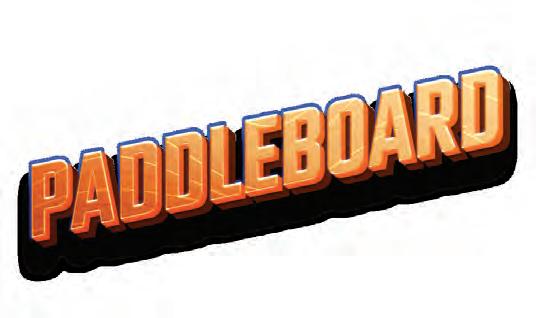
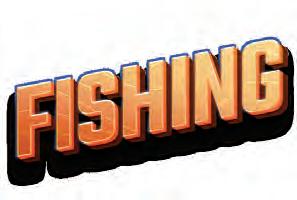



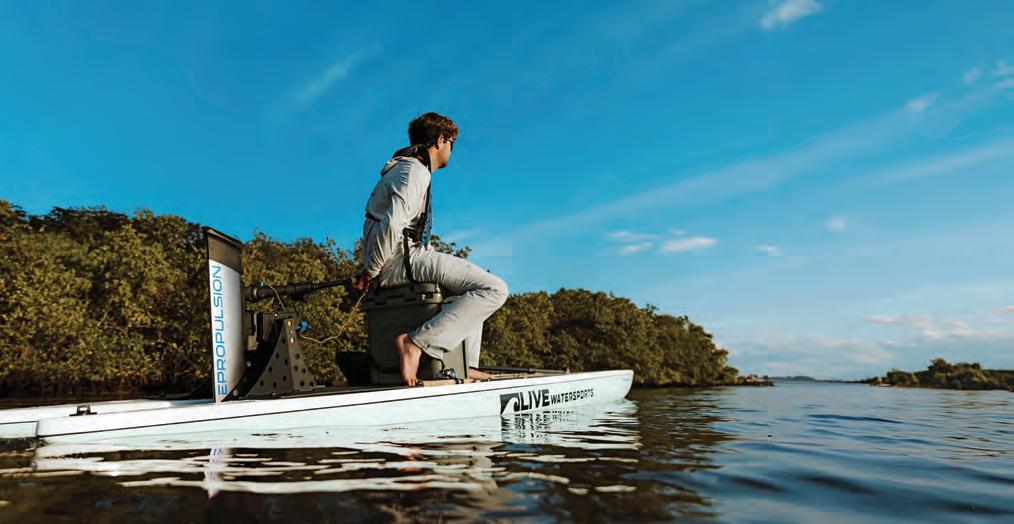






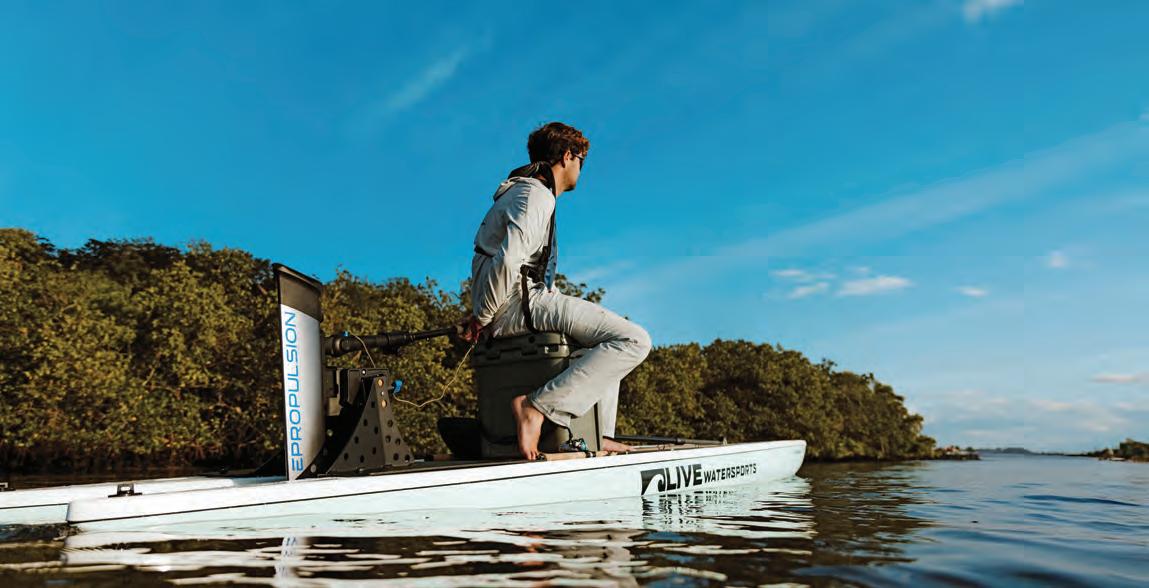





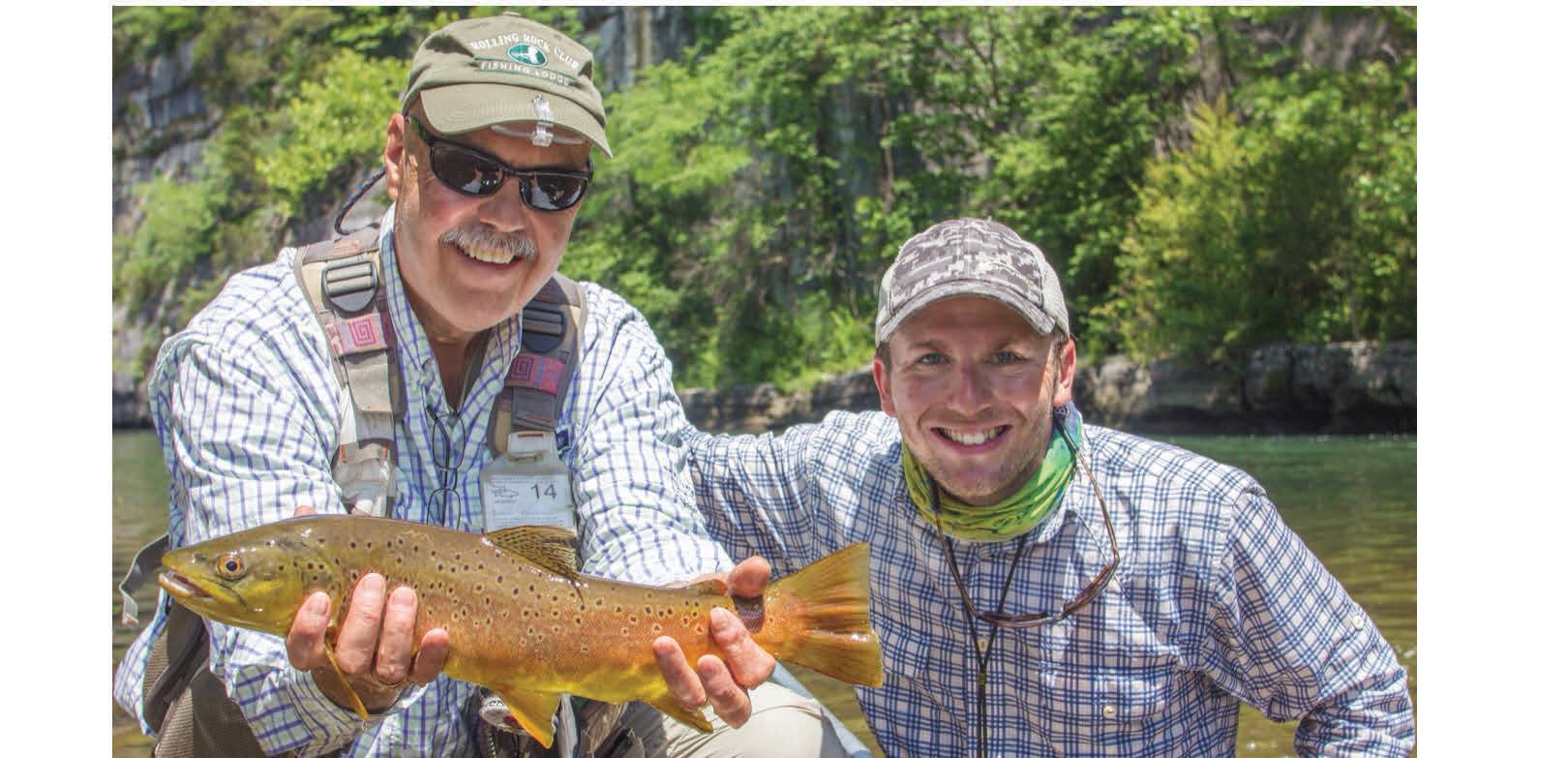




Capt. Mike Smith

Black drums, aka “Big Uglies,” are a super fun sh to catch. It doesn’t matter if they are 18 inches weighing two pounds or 5 footers weighing 90 pounds. ey put up one heck of a dragpulling ght once they gure out that they’re hooked.
Black drum can be found in inlets, saltwater estuaries, bays, river mouths, brackish creeks and especially anywhere in close proximity to oyster beds as they love to eat oysters, clams, crabs, shrimp and bait sh. ey are o en in huge schools and will stay in one spot for a week or so if there is a lot of food for them and not a lot of predators, which means that you can catch dozens of them when the bite is on.
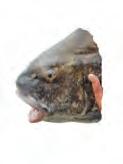
My favorite way to target “big uglies” is on the incoming tide, in shallow estuaries, less than 3 feet deep. at is when you can see them tailing as they root around oyster clumps for crabs and shrimp. A well-placed shrimp or crab o!ering will get their attention very quickly. Make sure you have enough weight to get it to the bottom so they can nd it.
on them. De nitely sh the older docks with the most stu! growing on them. ese docks pilings will attract the most crabs and shrimp to them. Old dock pilings are like grocery stores for black drum. When I sh the docks for black drum I usually have one of two baits with me. Live or frozen shrimp or a scented shrimp jig. ose are my goto baits for drum around the docks. Real shrimp works the best, but the scented jigs are pretty good too. A shrimp rigged with a small split shot is how I usually target black drum. Just cast it to where you think the sh are and wait for the hit. If you are shing with a scented shrimp jig just bounce it slowly on the bottom as you reel it in. It is similar to the way that you would sh for a %ounder. e slower the better.
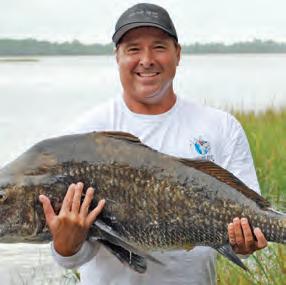
Black drums have four nostrils, and their sense of smell is amazing, so the stinkier the bait, the better when targeting these sh. A great arti cial bait is the Berkely Gulp shrimp on a 1/8 ounce jig head. You can just cast it to the sh and let it sit on the bottom and wait for them to nd it. However, if you give it a bounce or two you will usually get their attention much more quickly.
Another great place to target “big uglies” is around docks. Dock pilings tend to have lots of oysters, clams, barnacles and sponges growing
For surf shing anglers, large schools of black drum typically work their way up and down the beaches in the cooler months feeding on crustaceans. Use a beefed up pompano rig, jig or sh nder rig and place them in front of the schools approaching. Long casts are o en needed, so be sure to have plenty of line capacity on your surf shing reels when targeting the large ones. Not to mention, once you hook into a big drum the drag is going to go screaming! You’ll want anywhere from 20-50 lb. main line for your best opportunity to land one.


Black drum make for a tasty dinnertime treat, but I wouldn’t suggest eating the big ones. ey are always full of worms. I nd that the best ones for eating are 28 inches or less in length.
I caught the black drum in the picture above on a dead shrimp. It was about a 50 pounder and took 30 minutes to get it in. I saw it tailing next to an oyster bar.
Capt. Mike Smith, owner of Fish Your Ass O Charters, is an inshore shing guide who has been shing the inshore waters, oyster bars and grass ats of Florida for more than 40 years. Reach him at (561) 339-2317, email: contact@ shyourasso .com or visit shyourasso .com.
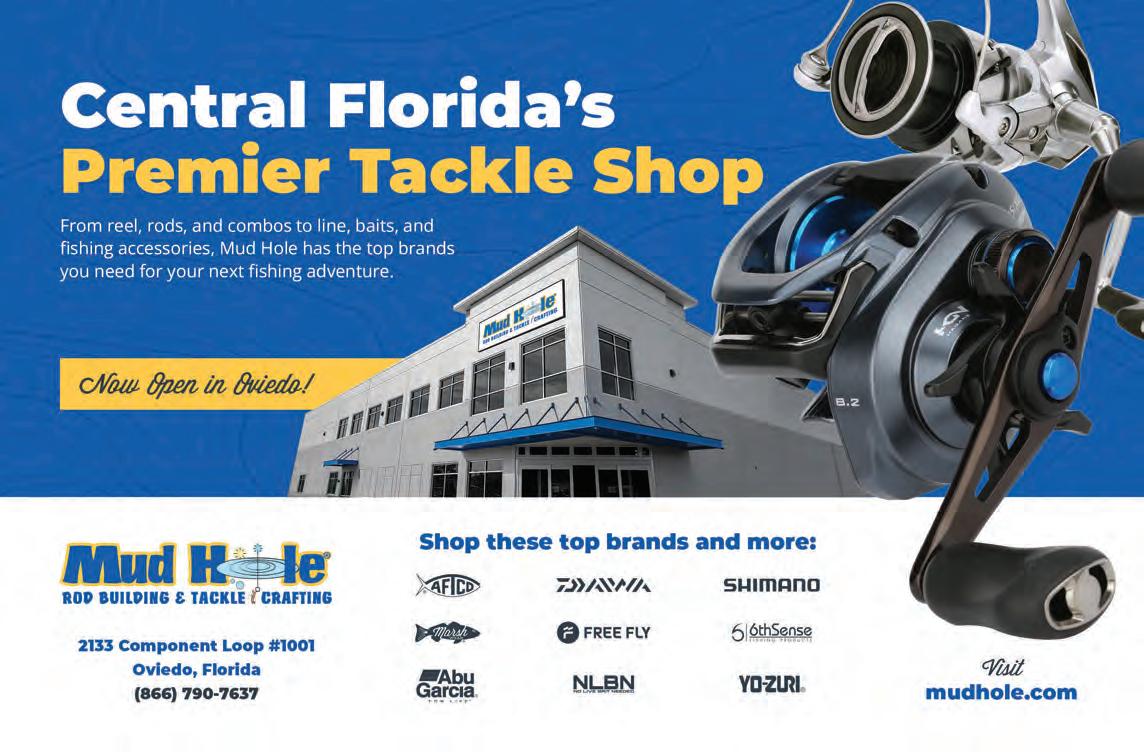

By A. deGruchy
Late spring into early summer is prime time for permit in Islamorada. !ese sh are picky, powerful, and love crabs, so having the right gear and approach can make all the di erence in getting one to the boat.
A 7’ to 7’6” medium-heavy spinning rod with a fast action provides the backbone needed to handle their long runs and sudden bursts of speed. Pair that with a high-quality reel in the 4000–5000 size range, spooled with 20–30 lb braid for better sensitivity and hook-setting power. Personally, my go-to is the Fenwick Inshore Elite rod paired with a 4500 PENN Authority reel. Since permit are known for being line-shy, uoro leaders are a must. 20 lb leader is ideal along with a 2/0 circle hook to increase the chances of a solid hookup. We rely on the Mustad Demon inline circle hooks and they’ve never let us down.
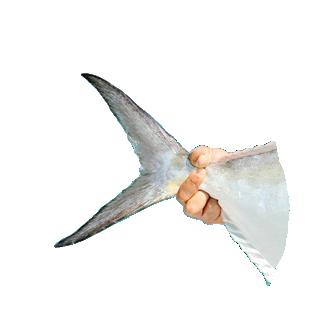

Finding permit in Islamorada means knowing where and when to look. Flats and channels are
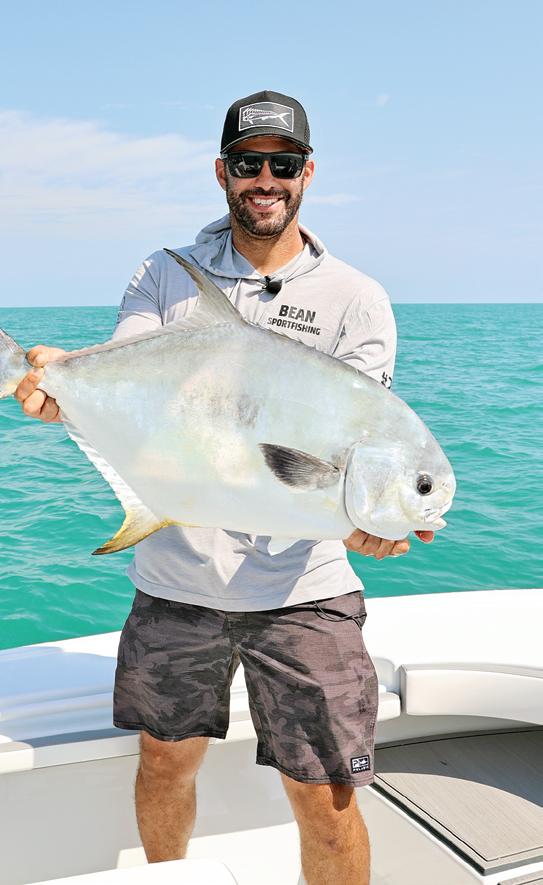
the best spots, as well as some public wrecks. Watch for sh tailing in shallow water or cruising deeper cuts, or schools of permit circling wrecks. A moving tide, whether incoming or outgoing, stirs up crabs and gets permit feeding. When presenting bait, it’s important to cast ahead of where the Permit are heading, let the crab sink naturally, and maintain light tension.
Patience and stealth go a long way when targeting these sh. If a permit is spotted, it’s best not to rush. A smooth cast, a natural bait presentation, and a little patience can make all the di erence. Once hooked, steady pressure and a good drag system will help handle their powerful runs. May and June in Islamorada o er some of the best permit shing of the year. If you’re ready to chase permit in Islamorada, book your trip now at www. beansport shing.com, spots are limited!
Be sure to follow deGruchy’s adventures at @bean_sport shing on Instagram and YouTube.



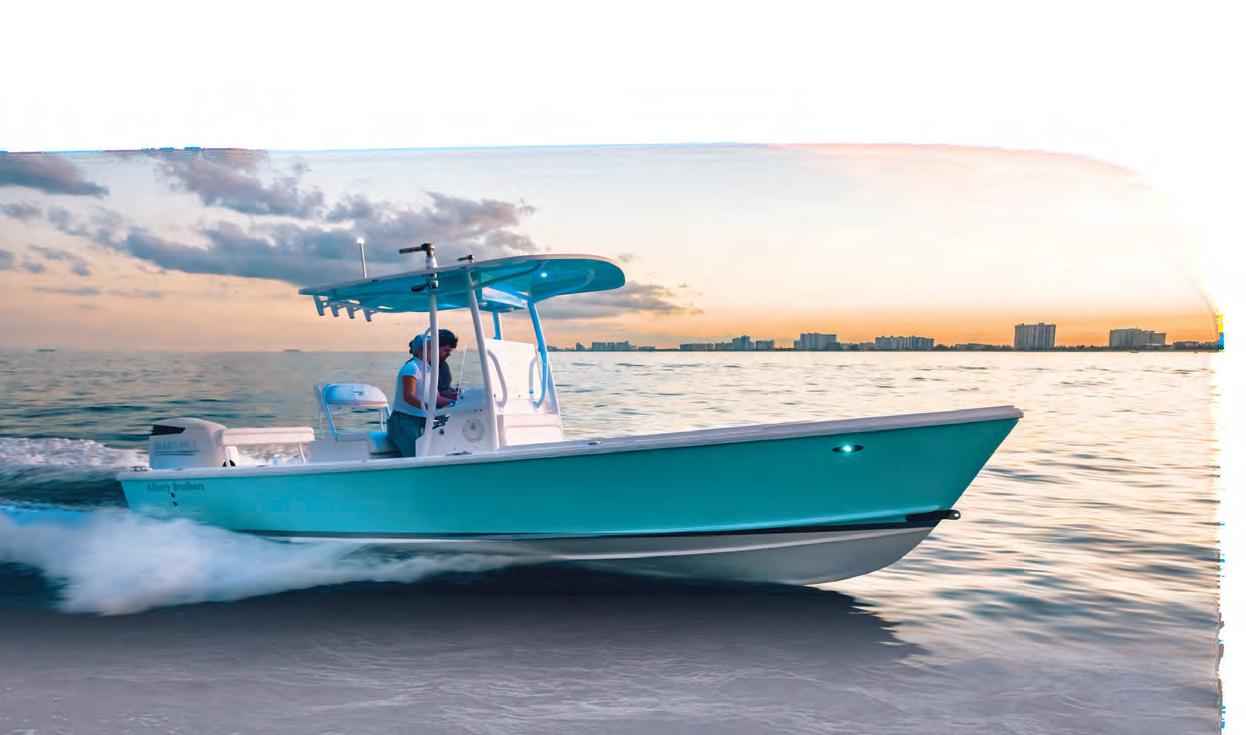

Stationed strategically around the East Coast, all Suzuki RePower Centers have achieved the highest level of Suzuki certifcations to meet and exceed your repower needs. Mastry Engine Center has received the Suzuki Marine Super Service Award and has been ranked #1 in Suzuki Marine US Sales! 60 YEARS OF REPOWER EXPERIENCE!

RePower Packages designed to best ft your needs and not stretch your budget. Financing available.

Rest assured, all Mastry Suzuki RePowers are backed by Suzuki’s industry leading 5-year or 7-year factory warranty.
When Considering A Repower, Consider These Factors:
•Every Authorized Mastry Suzuki RePower Center has decades of repower experience providing proper rigging, controls, propeller matching and in water testing
•With a Mastry Suzuki RePower, owners gain improved performance, less noise and greater reliability
•Mastry Suzuki RePower’s exclusive Owner’s Edge Program*
•Mastry Suzuki RePower Centers use authentic Suzuki OEM parts and have factory certifed technicians


Since 2014, Mastry Engine Center, has been building the premiere Suzuki Outboard repower network in Florida. Today, Authorized Mastry Suzuki Outboard Centers have been exceeding expectaions in the Southeast for over two decades. Recently Suzuki Marine requested Mastry Engine Center to expand the network throughout the Northeast. Now boat owners from Maine to Florida can be assured of the best support for their Suzuki outboard repower project. All Authorized Mastry Suzuki RePower Centers provide the best options, information and package pricing for excellent performance in repower.
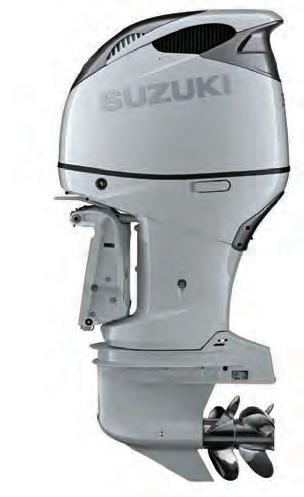



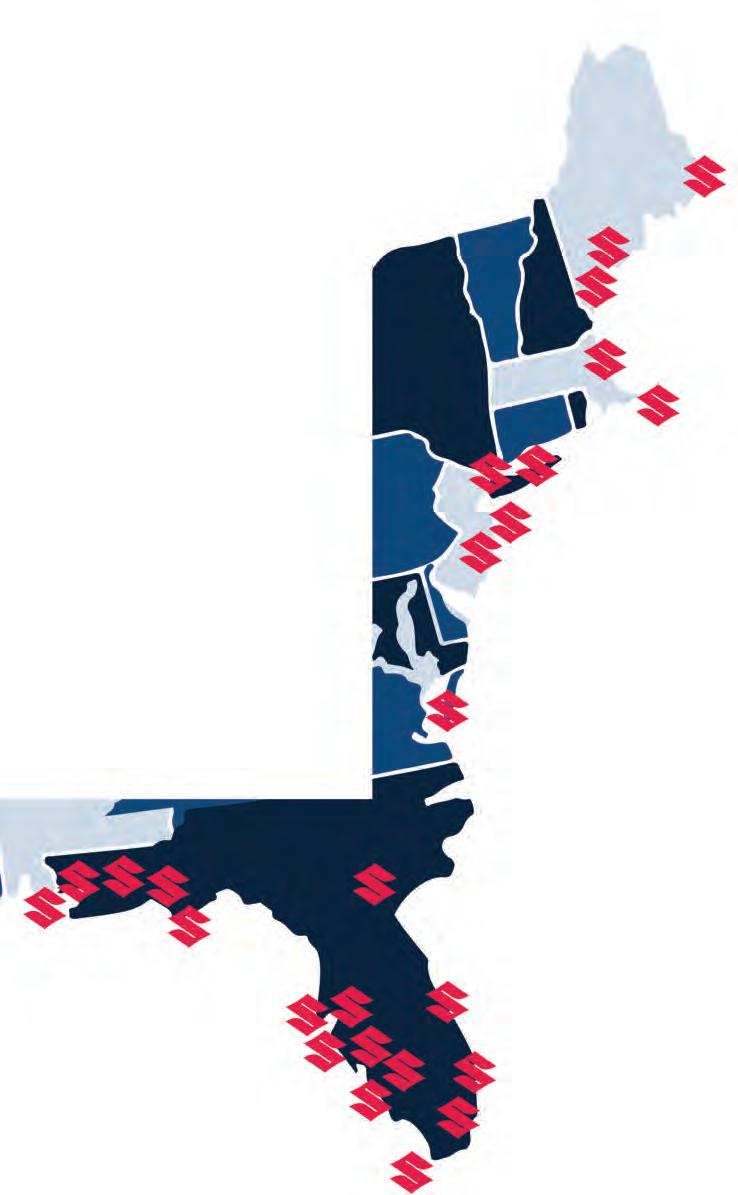

*Get with the Program!
When you purchase a new Suzuki outboard from an authorized Mastry RePower Center you qualify to become a member of the Mastry Suzuki Owner’s Edge. Owners receive an identifcation card that provides them with important information about their Suzuki outboard motor as well as a passport to additional benefts during ownership. Members enjoy a detailed engine maintenance schedule, Mastry Suzuki RePower Trade Program and special pricing from Mastry Suzuki Partners.
When summer rolls around and the tides align, there’s no place I’d rather be than Southwest Florida—with a rod in hand and visions of giant snook dancing in my head. !is year, my buddies and I made the pilgrimage with a simple mission: land a personal best. Big sh only. No compromises.
Dawn Patrol: First Cast, First Heartbreak
Our daily rhythm was dialed in: sh at rst light, break for lunch and a nap, then hit the water again at dusk. On our rst morning, we were thighdeep before sunrise, casting into the mystery of the early light. Within minutes, I hooked a brute. It crushed my lure and made a blistering run—until my line snapped clean. Devastated, but not alone; the others were tight on steady 20–25 inchers. We spot-hopped the rest of the morning, landing a solid variety of sh, then rested up, ready to tangle with giants again at dusk.
Evening Drama: Three Strikes !at evening, we waded into a legendary snook haunt. I connected again—with something even bigger. A er a long, nerve-wracking battle, my
leader snapped. Again. Moments later, John hooked into a monster that nearly emptied his spool… and then his leader failed too. We were stunned but red up. !e big girls were here.
I re-rigged and kept casting. Soon enough, another explosion on my paddle tail—this one the biggest yet. She breached once, massive and thick. !en, just like that, gone. My third heartbreak of the day. Lesson learned: if you’re chasing giants, bring the heavy gear.
Turning the Tide
By Capt. Michael Okruhlik

massive strike. !e sh peeled line o like a runaway train, then turned and charged. I cranked fast, heart in my throat. !e ght was clean, intense and unforgettable.
Day two brought redemption. Je landed his personal best—an impressive 34-inch snook on a 4” Knockin Tail Lure. I was eager to return to the spot that broke us, but a sudden evening storm shut us down.
Final Shot, Forever Fish
Our last morning o ered solid action—snook to 8 pounds, nothing to complain about. Still, I couldn’t shake the thought of one last chance that evening. No storms. No wind. Just at, silent water and that nal opportunity.
She measured a fat 38 inches, bottoming out my 15-pound scale. Hooked right in the jaw, leader untouched. My new personal best.
The Verdict
!is trip was a rollercoaster—equal parts frustration and triumph. But that nal evening, under a fading Florida sun, everything came together. And that’s what keeps us coming back: one cast away from glory.
Capt. Michael Okruhlik is the inventor of Knockin Tail Lures®, and the owner of www.MyCoastOutdoors.com.
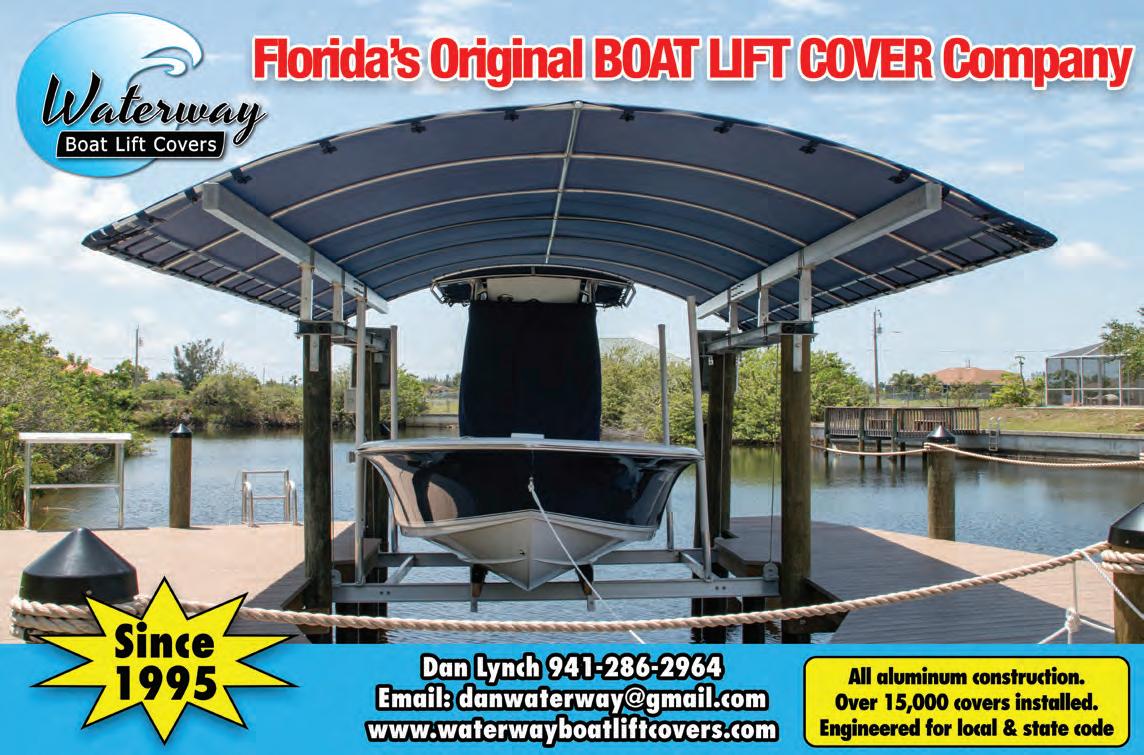
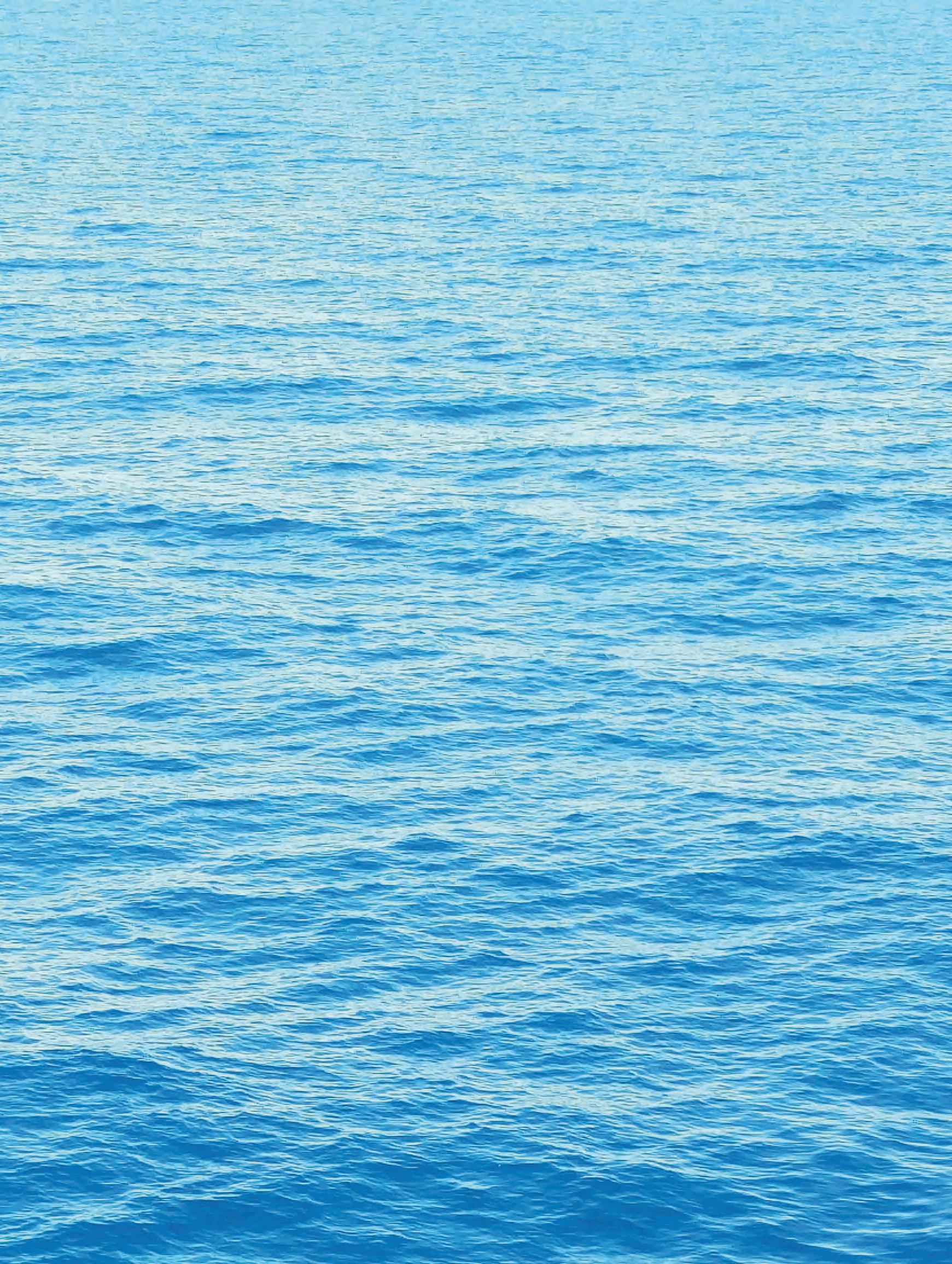


August on the Gulf. Have you gotten your SCALLOPING on? We haven’t, but definitely will try to get out there this month. I love scalloping, but only on sunny days, when the rays of the sun go deep into the water, and I can clearly see the beautiful world below the waves. If you want to experience scalloping, but have no boat or are clueless about what, where or when, contact one of our guides. Just bring your snorkel, mask and fins, and even your little ones will love it. It’s an underwater Easter Egg Hunt! Hope for a sunny day (Don’t forget sunblock!) and you will have a great experience and “dinner” for later. Stay safe, leave the alcohol at home and remember, there are children on those boats.
We went to ICAST last month at the convention center in Orlando. It is a huge, huge fishing trade show. Fun, much walking and a bit overwhelming! We met lots of people selling all kinds of fishing stuff. Hopefully, I will have the opportunity to introduce some of them to you in the coming months.
This month’s recipe Easy Baked Flounder for Two really is quick, easy and delicious. Use the same recipe for any fish, shrimp or even chicken. See page 2.
New advertiser that I failed to spotlight last month is Ken Rembert, Land Advisor. See Ken on page 7. Again, I want to remind you to keep your vaccines current. Covid is still here. The flu will never go away. It just changes every year. Stay smart, stay well and stay alive!

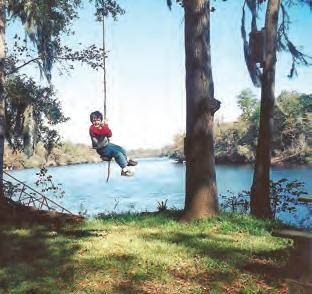

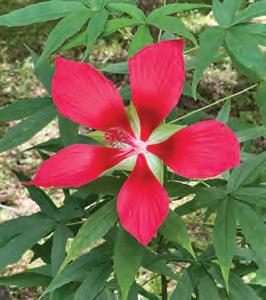


Read what Capt. Tony Johns has to say on page 10. Something you might be interested in.
As always, please thank our advertising partners and the folks at our distribution sites. If not for them, you would not be reading the World’s Greatest FREE Fishing Magazine.
Lynn Crutchfield Co-Publisher Coastal Angler Magazine of North Central Florida/Nature Coast
North Central Florida Nature Coast Staff
Cary Crutchfield
EDITING & PRODUCTION
Lynn Crutchfield
GRAPHIC ARTS & DESIGN
Kathleen Stemley
CONTRIBUTING WRITERS
Dr. Kevin McCarthy Noel Kuhn
Capt. Jason Clark
Capt. Katie Jo Davis
Capt. Tommy Derringer
Capt. Jonathan Hamilton
Capt. Tony Johns
Capt. Dallas King
Capt. Pat McGriff
Capt. Brent Woodward
CONTACT INFORMATION crutch@coastalanglermagazine.com 352-542-0356
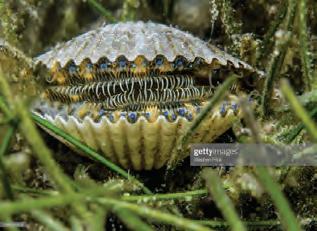
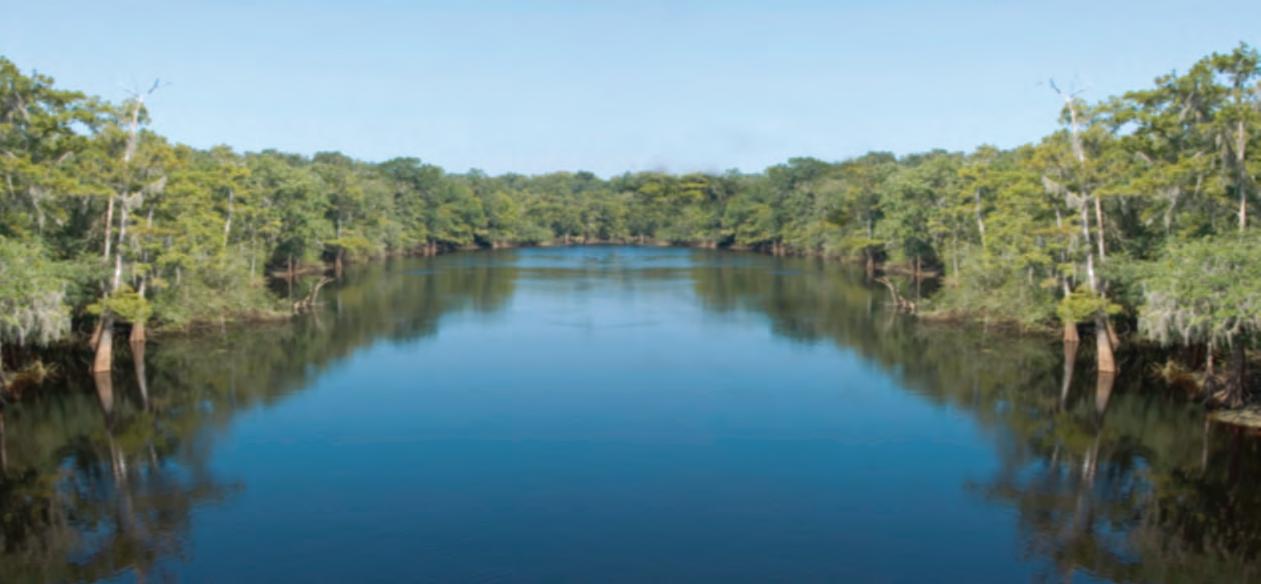





beautiful Kings Bay while you enjoy your delicious, freshly prepared meal, watching manatees, dolphins, pelicans and boats. Or, you can carry it home; your choice. Open Tues-Thurs 10:00-5:30, Fri-Sat 10:00-8:00. 201 NW 5th St. Crystal River 352-795-4700.
Preheat your oven to 375 F.
Put about ¼ cup flour in a plastic bag. Salt and pepper your fish and place in bag with flour. Shake lightly. Put the butter in a relatively flat oven safe dish, and place in oven to melt, for just a couple minutes.
• 1 medium flounder filet or any fish of your choice
• 2 to 3 tablespoons butter
• Salt and pepper
• Flour
• Dried thyme (Any other seasonings that you like.)
• 2 green onions, minced
• Panko
• Crumbs
• Handful of Parsley minced (optional)
Remove from oven and lay the fish in the butter. Turn it over so butter is on both sides. Season with your choice of seasonings. Place green onions on fish and put in oven. Depending on thickness, baking time will be 10 to 15 minutes. Sprinkle Panko over fish for last 5 minutes of baking time. Fish is done when it flakes. Remove from oven. Fish is done when it flakes with a fork. Sprinkle with parsley.
Use any fish you like, or shrimp or chicken. You can’t go wrong.
Lynn Crutchfield, Co-Publisher Coastal Angler Magazine of North Central Florida
By Kevin McCarthy

OBy Dr. Kevin M. McCarthy
ne of the privileges of living in North Florida and boating its rivers, is to see the wide variety of wildlife found in few other places. For example, more and more towns, as well as residents interested in encouraging wildlife to spend time here, are making butterfly-friendly plots of land and planting flowers that are known to attract many kinds of butterflies. I remember reading that butterflies symbolize change, freedom, and the beauty that can emerge from challenging transitions, that what begins as an ugly caterpillar ends up as a remarkable creature that everyone can delight in.
When I once boated the Suwannee River with my good friend Cary Crutchfield (the co-publisher of this magazine), I remember seeing many species of butterflies, especially in those relatively undisturbed parts of the river. When we reached very quiet areas along the waterway, we saw a huge collection of the beautiful creatures.
A particularly rich area for butterflies is the Lower Suwannee National Wildlife Refuge, perhaps because the refuge is somewhat remote. One of the species readily available is the Red spotted purple (Limenitis arthemis) – see photo #1. Its dark wings along with an iridescent blue on some of its wings are really quite unusual.
The Suwannee River area in Florida, in fact, is particularly rich in a diverse range of butterfly species, with over 90 identified near the Lower Suwannee National Wildlife Refuge, which will surprise visitors, whether in boats or cars, with the many species. This includes the red-spotted purple, Ceraunus blue, and various hairstreaks, elfins, sulphurs, and white butterflies. The area also supports the Viceroy butterfly, and you might even spot a Giant Swallowtail. Lepidopterists, or those entomologists who study butterflies,
tell us the area is particularly good for seeing butterflies because of the area’s varied habitats and relatively quiet areas away from predators.
The state butterfly of Florida is the Zebra longwing, an insect with a black-and-white wing pattern. The species is somewhat unusual because they feed on nectar and pollen, a habit that makes their bodies toxic to predators.
One final note: I live about two miles from a spectacular butterfly rainforest in The Florida
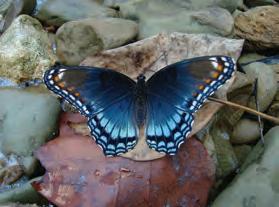

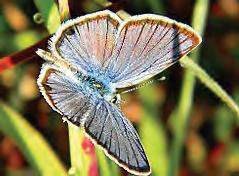
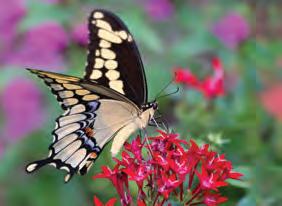
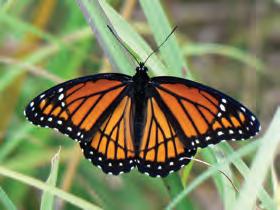
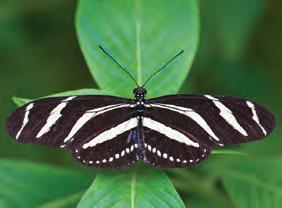
Museum of Natural History, on the campus of the University of Florida in Gainesville. Taking children or grandchildren through that museum and hearing their squeals of delight when a butterfly lands on their shoulder or outstretched arm is very memorable for me and, I hope, for them. Before going to the museum, call them to make sure about their hours: 352-8462000.
Finally, I have a friend, who at the moment is going through a hard time, who likes to say: “Just like the butterfly, I too will awaken in my own time.” Another favorite quote is this: "Butterflies are selfpropelled flowers.”
Kevin McCarthy, the author of Suwannee River Guidebook (2014 – available at amazon.com) can be reached at ceyhankevin@gmail.com.

Note from editor: The Florida Museum of Natural History, which houses The Butterfly Rainforest, is temporarily closed for renovations. As Dr. McCarthy suggests, call before you go. I have taken my grandchildren many times and they love it. See photo of Secelia.
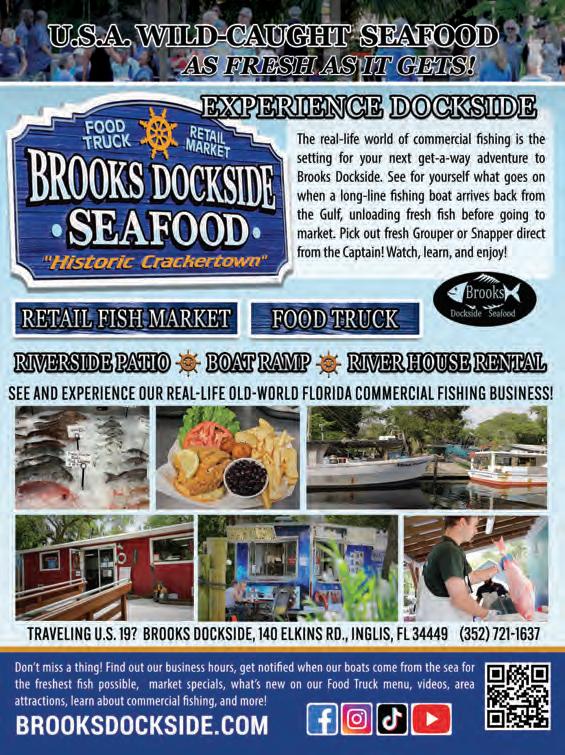

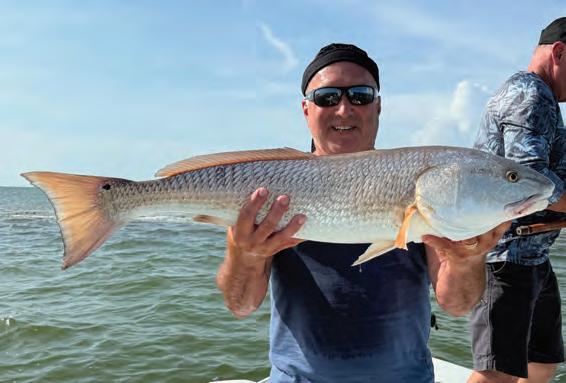
August is here, and that means summer is nearing the end, as kids get ready to head back to school and vacations are concluding for many families, but in the fishing world along Florida’s Nature Coast, August means the beginning of the bull redfish run. The full moon starts the initial cycle of schooled up, hungry redfish as they head inshore from their summer spawn. Western rocky points are great areas to target these large schools of fired up fish. Shrimp, pinfish and mud minnows are all great live baits to use for these fish. Typically, the incoming tide produces the best bite during this time of the year.
The sea trout are still holding out in the deeper areas along rocks and broken bottom in 5 to 8 feet of water. A popping cork with a shrimp on a longer leader will agitate these fish enough to eat. I usually fish for them on the stronger moving tide of the day, and it seems like cloudy days have been the best bite, as it cools the surface of the water a bit.
The scalloping is remaining strong as we approach the middle of the season, and the size will be bigger than in the beginning, as they grow extremely fast during the 1-to-2-year life cycle.
Although the heat of the summer is upon us, early mornings will provide a sense of coolness to your trip and will have the bite a bit stronger before the heat of the day.

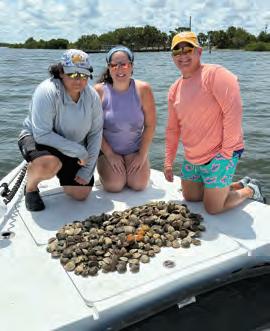

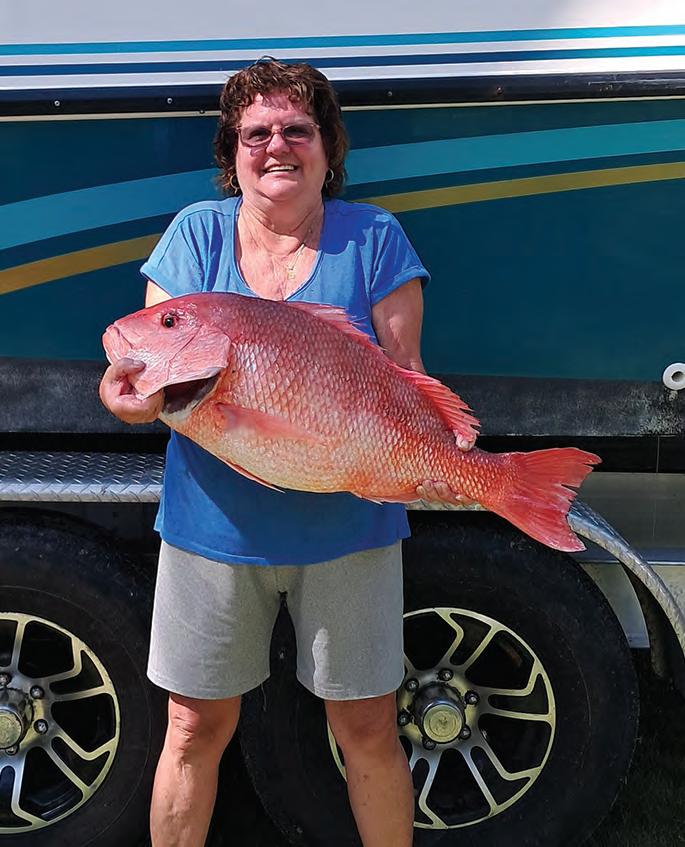
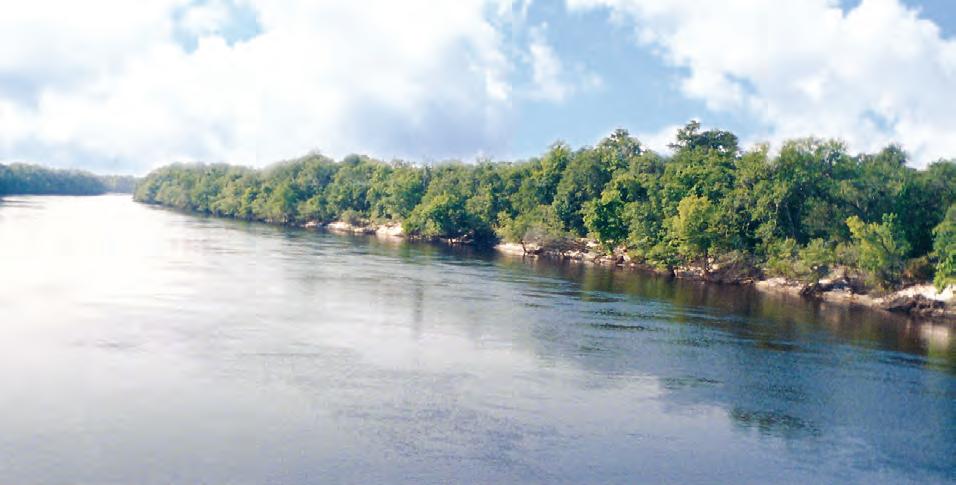

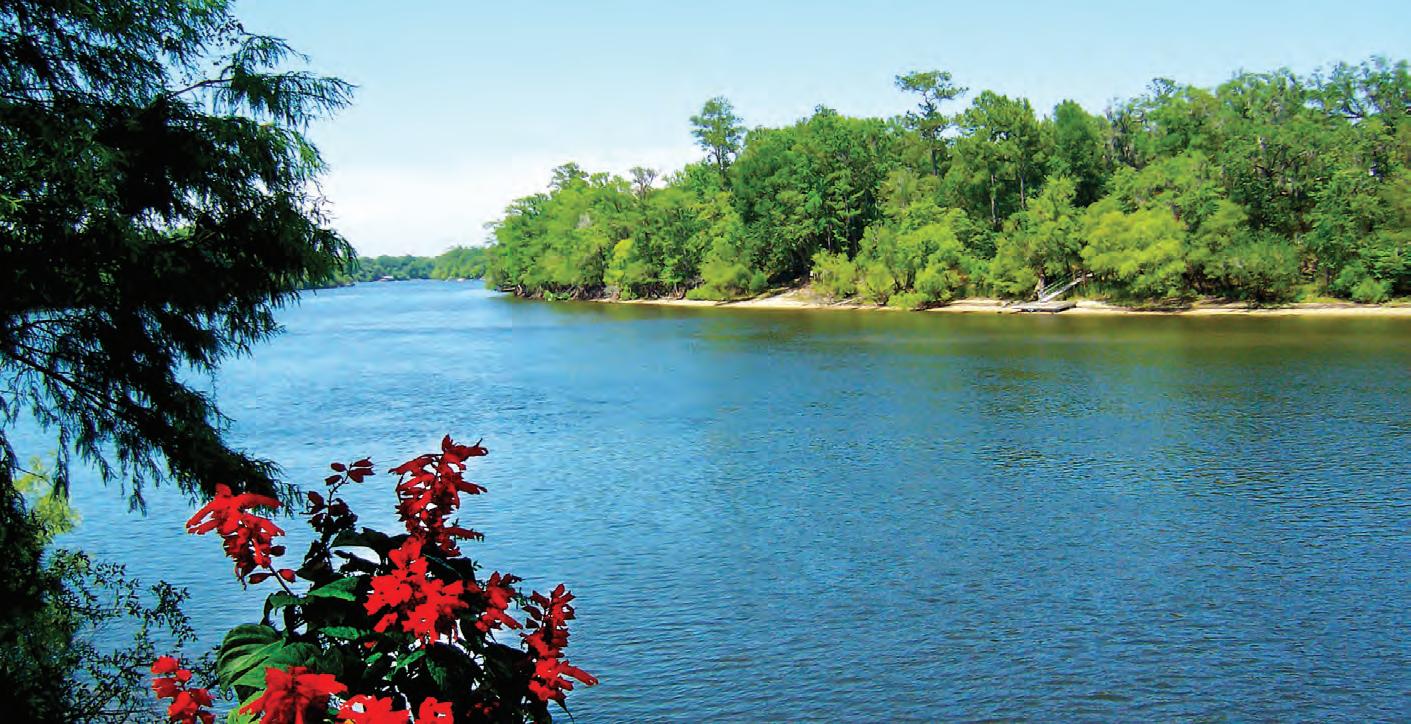













CAPTAINS COVE OUTFITTERS
39 West Hwy 40 Inglis, FL
352-447-5610
www.CaptainsCoveOutfitters.com
DW&D BAIT HOUSE
12831 Whiddon Ave Cedar Key, FL 352-543-6109 352-222-9383
44 TACKLE CO.
1522 US 41 North Inverness, FL 34453 352.726.6100 www.44Tackle.com
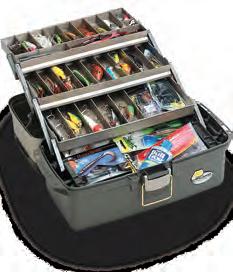
OCKLAWAHA BAIT & TACKLE 13600 East CR 25 Ocklawaha, FL 32179 352-816-5853
BUBSIE’S BAIT & TACKLE 7 1st Ave Se Steinhatchee, FL 32359 352-275-7666


Welcometo the month of August and the hottest temps of the year! Thankfully, here along the Big Bend Region of Florida, you can find plenty of ways to cool off and enjoy the coastal waters and beautiful inland lakes and rivers!
If you are new to the area, many of you are amazed at the wildlife and natural beauty that is here! But if you have been here for decades, you realize what we have now is only a fraction of what was here 40 to 60 years ago. The truth is, our still beautiful state is dying!
There are many ideas and theories, but the bottom line is that it's manmade pollution that's killing the ecosystems of Florida. With the population explosion we have seen in Florida during the last five years, this problem is being exacerbated!
Here along the Lower Suwannee River, the estuary and adjacent coastal waters, we have seen a dramatic loss of submerged aquatic vegetation (SAV), both freshwater and saltwater varieties. After years of documented seagrass loss outside the mouth of the Suwannee River, the State of Florida has only in the last couple of years recognized the problem. In the freshwater systems of the Suwannee River and adjacent coastal creeks, the state of Florida is only now recognizing the massive loss (80-90%) of the freshwater eel grass and other SAVs.
These submerged aquatic grasses are critical for a healthy and flourishing ecosystem, in both saltwater and freshwater environments. These ecosystems depend on these grasses for food and refuge. If these grasses are gone, then so are ALL the critters and creatures who depend on them for survival! The loss of SAV affects the whole food chain from the top to the bottom!
So do we just give up? Definitely not! As outdoor enthusiasts, we can
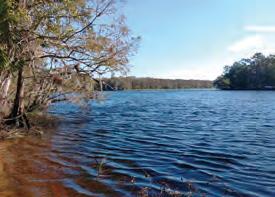
make a difference, if we choose to! Here on the Lower Suwannee River we are choosing to do something!
The Lower Suwannee National Wildlife Refuge is made up of 53,000 acres, that includes both sides of the river from approximately Fowler's Bluff, all the way to the Gulf of America. Then, up the coast to Shired Island and South to Cedar Key, including the Cedar Keys National Refuge.
The volunteer group for the refuges is “Friends of the Lower Suwannee & Cedar Keys National Wildlife Refuge”. Members of this group, especially some people from Suwannee, are looking to put together a group of new volunteers to help the Refuge Friends Group. This group will focus on habitat restoration, and hopefully research into the reasons why these grasses have died and what can be done to prevent this in the future.
If helping to save the Suwannee is something that interests you, I encourage you to join the Friends of the Lower Suwannee & Cedar Keys National Wildlife Refuges. We also have a local Facebook page, “Suwannee a Fisherman's Paradise” that is dedicated to environmental issues here on the Lower Suwannee River along with some local history!
Captain Tony Johns | 352-221-2510
www.lowersuwanneriverfishing.com
Instagram: captaintonyjohns
Facebook: Lower Suwannee River Fishing Adventures
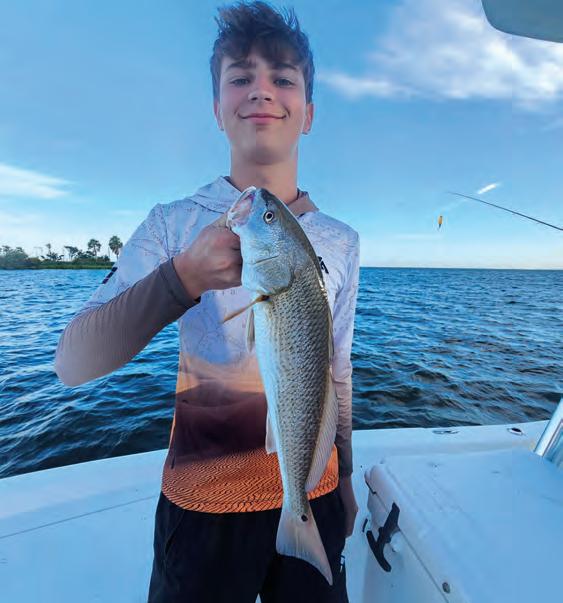
Hyanglers, what a great summer we are having. Sure, there's been some weird weather patterns, but the fishing has been top notch. Especially the red fishing!
Red fishing has been awesome this summer. I really can't say enough good things about it. Any window of moving water seems to have them opening their mouths and who doesn't like that?
My go-to bait for putting my clients on reds has been cut mullet on a knocker rig, paired with a 3000 reel. I recommend checking your bait every few minutes, because those pinfish do love to pick those hooks clean. Don't worry though, just getting the scent in the area will help move them into the area when you have been casting. When working the area with cut mullet, it's best to give the area 10 to15 minutes before moving on. You really do want time to get the scent in the water and hopefully lure the fish into your strike zone. I see so many people up by me, giving it five minutes and then moving on. Meanwhile, my clients were catching fish before they showed up and after they left. So, the key takeaway is to be a little more patient with cut bait and enjoy the reward when they start finding your bait!
Hopefully this helps y'all out some, and as always, stay safe out there.
Capt. Jason Clark
In The Slot Fishing Charters
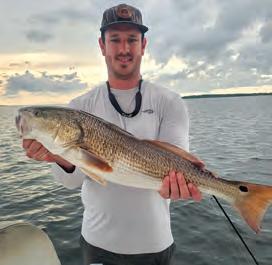
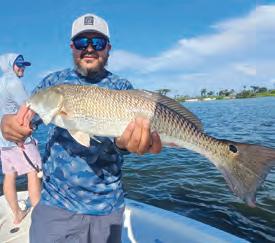



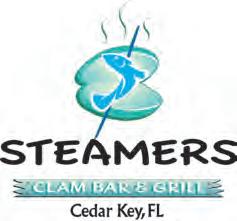
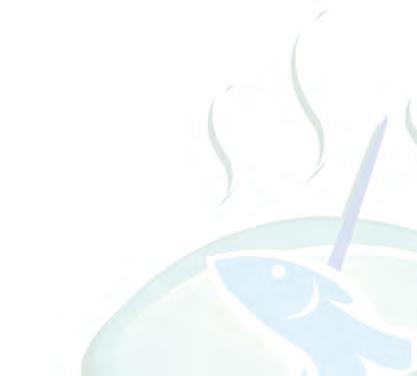
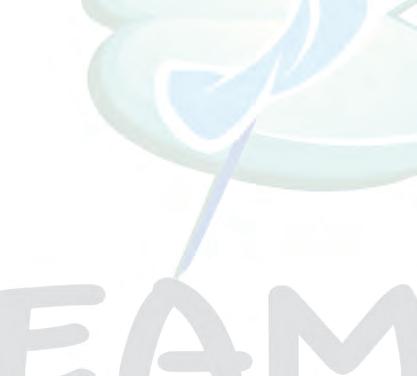





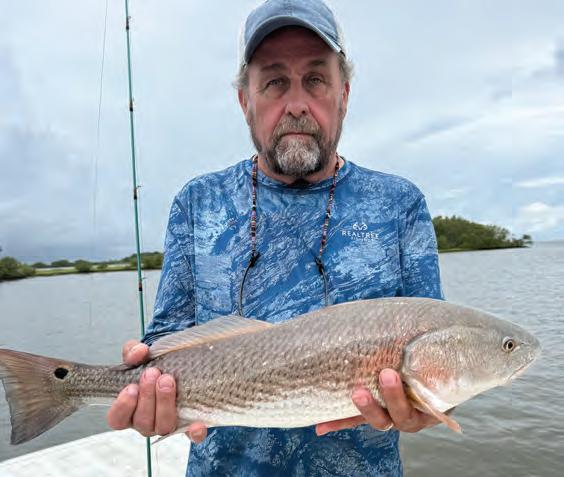
Hey guys and gals, hard to believe August is upon us. We definitely had some rainy days that messed with us, but we were able to dodge most of the storms and still get out there for some great catches.
Redfish bite picked up for us; I’d say a little bit last month. Finding them in their usual spots, chunking whatever bait gets caught in my cast nets. I suspect we will see larger schools coming into August.
Trout fishing has been so-so. We can still scratch away a good mess, but those bigger girls seemed to have moved offshore, running from the 90-degree water temps, which is par.
Starting to see some triple tail show up too, so if y’all want to get out there and catch a mess of fish, give us a call. Until next time, keep it Reel Native!
ReelNativeFishing.com
352-284-5514
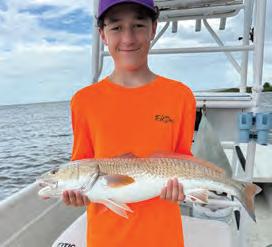
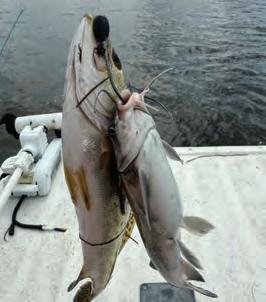
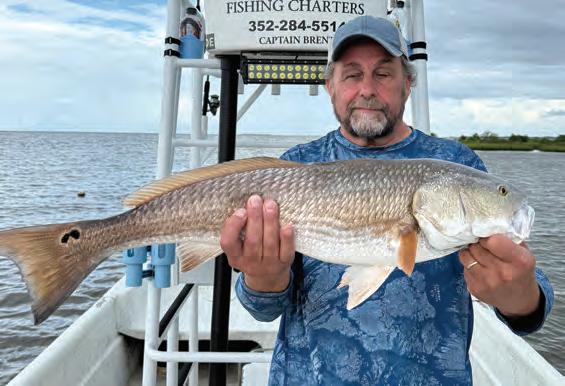
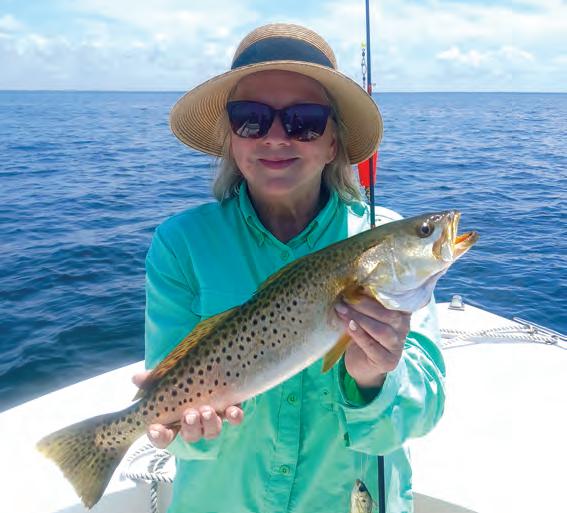
should find trout and reds offshore seeking relief from water temps around 90 degrees as of late. Fish the draws near thunderstorms for better wave action, and breeze for your anglers, but pay attention to the direction these thunderheads are moving. I would expect to find the best trout fishing in 7 to10 feet of water and I would forsake the floats and simply use jig-n-grub rigs. I fish Assassin baits, and this time of year, their 1/4-ounce Flash jigheads in the Electric Chicken pattern would be my August choice. MY Penn Battle reels matched up with Bert Deener's Custom Dawg Bone 7 foot 8 inchrods( Rain Shadow Blanks) are spooled up with TrikFish Gator Braid in 20 pound test.
My baits now are Assassin's 4 inch Sea Shads and 5 inch Shads in these patterns: Stinky Pink, Violet Moon, Pink Ghost, Butt Naked and Laguna Shrimp. Expect the bite in the morning to be more aggressive if you are fishing an incoming tide. Trout who have been feeding on shrimp the evening before, are more likely to continue that feed for several hours in the morning. I switch my target to black sea bass midday and then
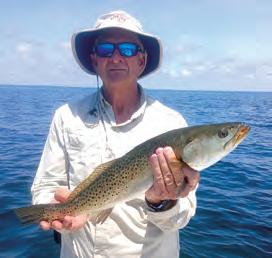
switch back to speckled trout looking for 6 to8 feet of water on the high tide. Redfish are likely to be feeding with the trout, especially if you are fishing troughs that run from offshore to inshore. Look for whitebait on edges and humps and keep on the move until you see some bait. Stay Hydrated and move the boat if you have no breeze.
Meanwhile, Let's Go Fishing! Pat McGriff dba One More Cast guide service for 33 years!
www.onemorecast.net
onemorecast@gtcom.net cell: 850.838.7541

"Heaven must be a Kentucky kind of place."
–Daniel Boone
Come home to your private lake retreat and relax your worries away. Cast a line, hop on your boat or just sit back and enjoy the view from the hot tub. Something this special only comes along once in a lifetime.
The 4 bedroom 2 bathroom custom log home was built with 100-200 year old logs. It features a sun room, two large screened in porches, a 1 car attached garage, and a full unfinished basement. A guest cottage offers more space for visitors or a rental. In addition, the property also features a 24 x 64 metal building.
Consider the additional possibilities of this one of a kind property: • Retreat (Water Sports, Fishing, Yoga) • Water Ski / Wakeboard / Wakesurf School • Bed and Breakfast • Wedding or Event Venue 23.25 ACRE PROPERTY
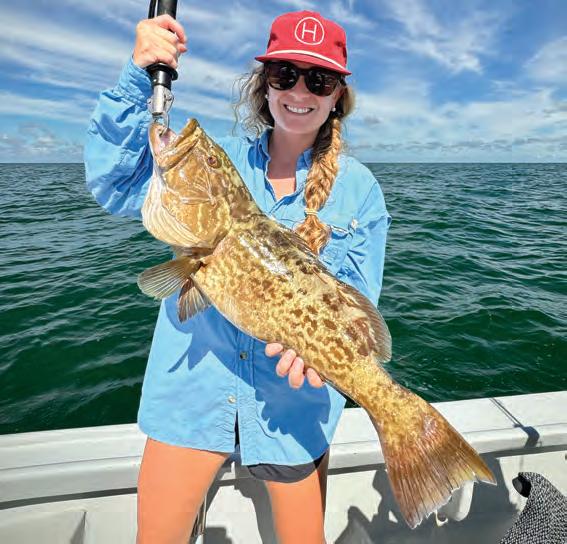
August is one of my favorite times of the year to target big schools of migrating redfish. My thoughts are, that bigger schools of mature redfish are making a northern migration and like to stop in for a short stay in Homosassa. They could be moving on the moons a lot like our migrating tarpon do. We have good red fishing year-round for sure, however its really cool to fish big schools of red fish in the months of August, September and October. However just like tarpon there are no guarantees that these migrators make the stop here. Lots of things can change their course and they just keep swimming, but when they do make the stop, it can make for memorable fishing!
I like to fish the tides this time of the year (really all year!). So I would plan on fishing the last two hours of the incoming for redfish. Bigger redfish schools are going to float in with the tide to your outside western points on St Martin Keys. They will stage outside of the keys in a safer depth of water, until the tide is flowing in, and then they will come in to feed. Live bait, dead bait, artificial, flys, you can throw it all! A lot of guys like throwing cut mullet or cut lady fish. They will eat shrimp on a jig head or live pin fish. Gold spoons are my favorite. Look for big standing water, and big V wakes. If you have good lights, you will see big masses of red! Just like last year, it seems that the shark pressure is as bad as it has ever been. I’m not in the business of feeding sharks, tarpon or redfish, so if sharks come in my school I will pack
up and go look for other fish.
Nearshore rock hopping can be productive, and I say rock hopping, because it can be hot out there and the only a/c you got is to crank up and hit the next spot! Load up on some shrimp and 1/4 oz DOA jig heads and take the kids out for some rod bending action. Sea bass, grunts, mangroves, sea trout and maybe a grouper will keep the rods bent.
Low tides, look for scallops in 3 to 5 ft ranges. Scallop numbers have been great to start the season. August, I think, will be a little bit better, due to them getting a little bigger. I feel like scalloping isn’t really about the limits, but more about the experience. Also, with that being said, there are some scallop measuring devices out there now. There is not a size requirement on scallops but it’s a great idea to maybe have more of a conservation mindset on the future of our scallops…
I have recently added an offshore boat to the fleet, If you want to get out and pull on heavy fish, and add to the supper table, get in touch with us! I’m really excited to expand my business. I always have a side note about boater safety this time of the year. Every year there are too many incidents that really could have been avoided… Stay safe out there and make long lasting great memories.
Capt. Stump
Jonathan Hamilton 352-403-2073
www.stumpnation.us
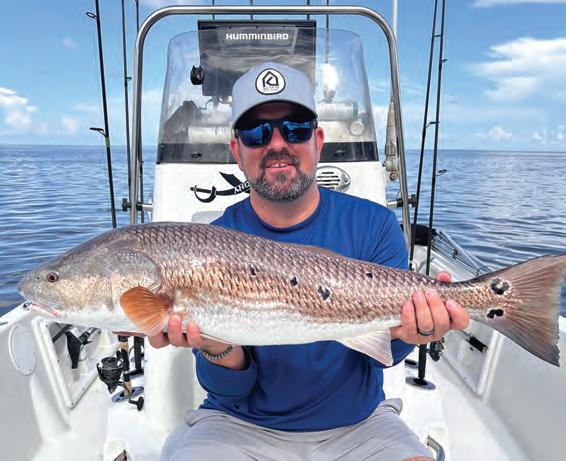
TThedog days of summer are finally here! August brings rain, heat, humidity and an amazing redfish bite mixed with some great scalloping. There’s two things I look forward to in August, and that’s the full moon and new moon. These two big tide cycles around the moon will move redfish by the hundreds. We will see a big push of fish on the north side of the Crystal River near the spoil banks, and outer islands of Yankeetown. When you find one, you better be ready; rarely will they be alone. A live pinfish or a big hunk of cut mullet is my go-to in the hot months. Shade in the mangroves is one of my favorite ways to target reds. I like to skip baits as deep as possible into the trees. I usually use an 1/8 to a 1/4-ounce jig head with a pinfish for this tactic. Once you make that perfect cast, make sure you let your bait soak in the “strike zone” as long as possible. Tide, floating grass, and wind can all effect how long your bait stays in the shade. Please remember to take good care of our redfish when you release them. In the summer heat, make sure you give them a good revival and be mindful of the sharks on the prowl for an easy meal.
Scallop season is the best we have seen in years. In hopes of this trend catching on for future years, don’t feel the need to get more than your fair share. Limit your catch; don’t catch your limit! There has been strides made in guides and locals keeping less than their limit, releasing smaller scallops and respecting our seagrass beds. Scallops have been most plentiful west of the St. Martins Keys, all the way down to Chaz point. Most have been in the 5-to-6-foot range of water. Remember your dive flag

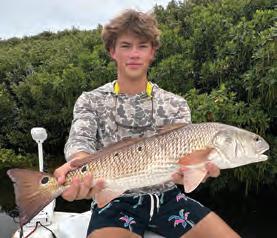
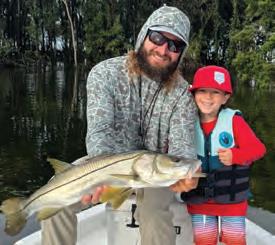
in the water.
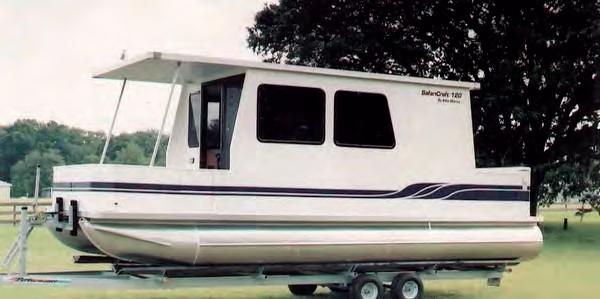

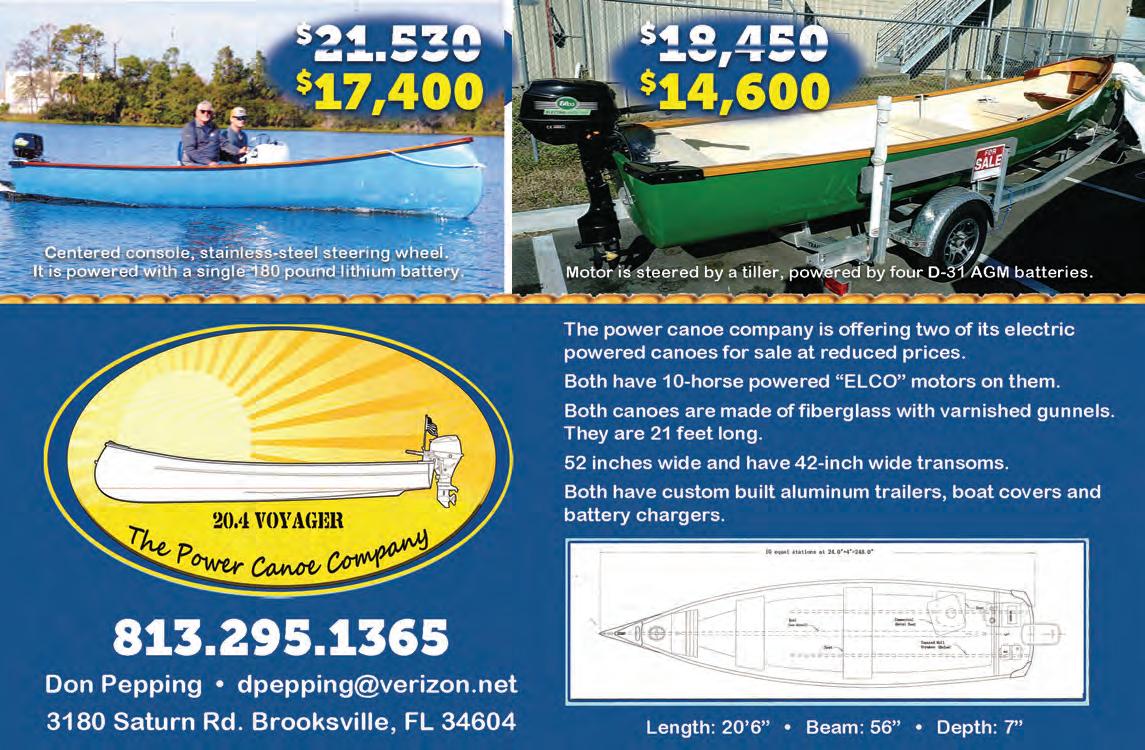
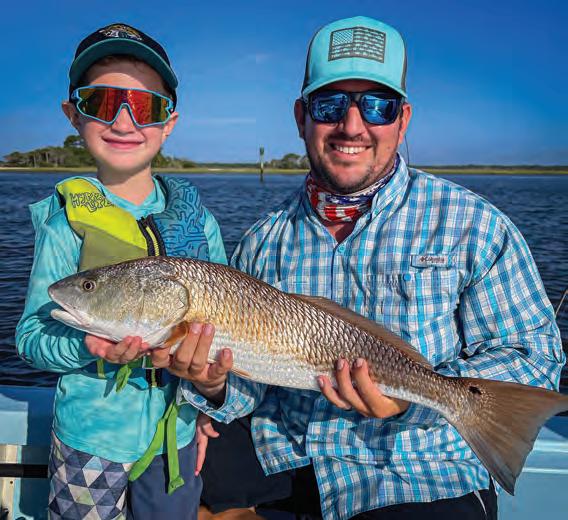
There are all kinds of great fishing opportunities this month in NE Florida! From huge tarpon, to tiling redfish in the grass, August is one of my favorite times of year to be on the water! Something unique happens this time of year in our region, and it makes for some of the coolest visuals in fishing. Flood tides will occur around the full and new moons, allowing redfish, drum, and sheepshead to access areas of the marsh that they usually can’t get to. Theses areas are lush with fiddler crabs and the fish know it. They will be crawling on their bellies and tailing like crazy in the grass looking to fatten up on those crabs. There really isn’t any secret to finding the areas that will hold tailing fish. You just need to go out there on the highest tides and look for yourself. Bring an old pair of sneakers, or better yet, some wading boots. Probably the most effective way to catch the tailers, is to park the boat at the edge of the flat and get out and wade after them. You don’t need a super skinny water skiff to get in on the action. I like to toss a soft plastic Saltwater Assassin paddle tail rigged on a wide gap weedless hook. That hook will work with any soft plastic and help keep the grass off your lure. Lead the fish by as much as possible and let the lure drop right in front of the fish. Sometimes, they are really into feeding on the bottom and it’s hard to get them to look up. When that’s the case, I’ll insert a small glass rattle into the soft plastic and sometimes that will do the trick. This is also a great time to bust out the fly rod. Some of the best takes I’ve ever seen have come on the long rod using a crab fly in the flooded grass. The flounder have been steady all
summer, and there should be a good number of them around all the area inlets. Finger mullet rigged on a jighead or fish-finder rig, then bounced along the jetty rocks, will be the preferred flatty catching method. Also, don’t overlook those small “drains” in the creeks on the last hour or so on the outgoing tide.
The late summer beach fishing should be going strong, and the tarpon will be behind the shrimp boats and on the pogy pods. The shrimpers have been at it all summer and the sharks are numerous to say the least, but this time of year can be really good for the tarpon behind the boats. Wait for the shrimpers to dump their by-catch, and just keep an eye out for the tarpon who will come up. The sharks will usually be on the feed first, but stick around a bit and see if a tarpon or two will show up. When you see the fish, you want just your live or dead bait out in front of him and hold on. While almost any other time you encounter tarpon, they can be very picky, but when behind the shrimp boats, they are usually in the mood to eat. The tarpon who are on the bait pods will be feeding early in the AM and then again after the afternoon thunderstorms. Net a few pogys and freeline them around the pods. You can also add a little weight and try to fish under the pod. No matter how we’re fishing for them, I like to use the same rig. I prefer a 7/0-10/0 circle hook with a 60 to 80 lb. leader, connected to a 40 lb. braided mainline. Just remember to bow to the king!
Capt. Tommy Derringer
www.InshoreAdventures.net
904-377-3734
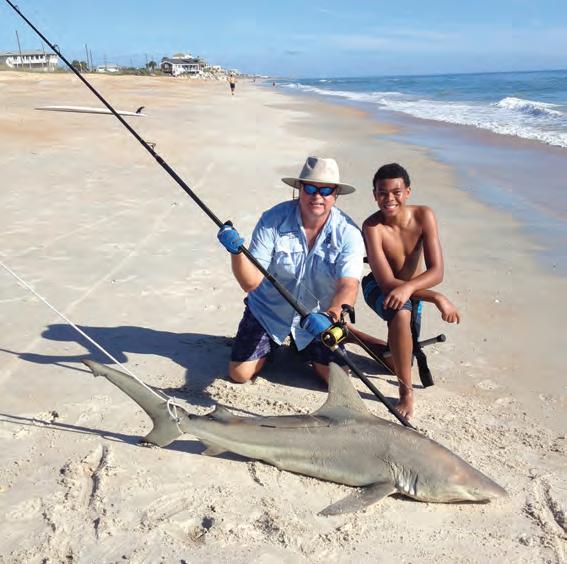
Themullet are coming! The mullet are coming! Twoeth by sea! So dust off the cast net and start practicing throwing pancakes. Sometime this month, every mullet on the Florida coast will come pouring out of every inlet all in the name of love. When they reach the ocean, they will all hang a right then swim all the way south to the Straits of Florida. That is where they will start the reproduction cycle and will produce the next wave of mullet fry. They get caught up in the Gulf Stream and flow back to the north. What this means for us, is the most exciting time of the year.
Literally millions of mullet come pouring down our beaches. What follows them, is every predator in our waters. I am talking about tarpon, sharks, Jack Crevalle, redfish, seatrout, flounder, bluefish, ladyfish, and everything else that eats mullet. The action that follows can be a strike on every cast.
The equipment you need can be kept very simple. First of all, is a cast net, and then, a five-gallon bucket. Most importantly is your rod and reel, spooled with mono or steel leader.
If you are not interested in sharks, you can forego the steel leader. I like 50-pound monofilament for most species. If you want to target my favorites, which are redfish, flounder and seatrout, you can drop down to 30-pound fluorocarbon and smaller hooks. A 2/0 circle hook tipped with a three-to-six-inch mullet does not last long in the surf. Early in the morning, cast these lively baits into just three feet of water. The seatrout come in very shallow. For all the other species, just get your bait into the trough inside the sand bar.
This excitement usually lasts through September, sometimes into October. If you want to book a trip, I have a few openings for August and September. Let us get your string stretched! The picture is of a firsttime surf fishing teenager. We caught so many fish that morning!
Noel Kuhn 43 years of surf fishing experience, surf fishing guide and long distance casting coach. Founding member of Florida Surf Casters club. 904-945-0660
www.TheSurfAngler.com



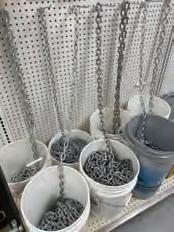
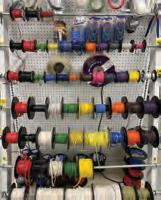

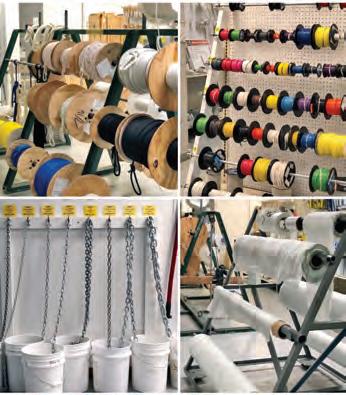
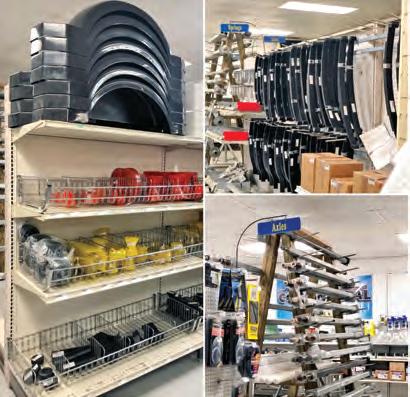




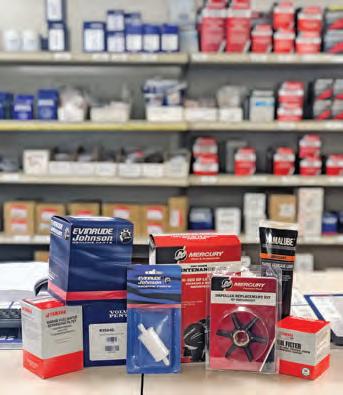








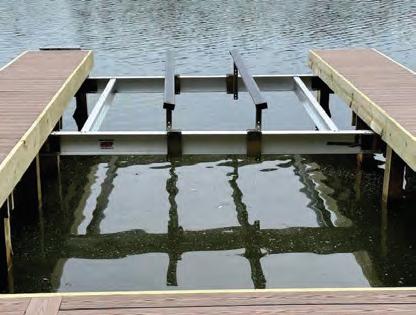
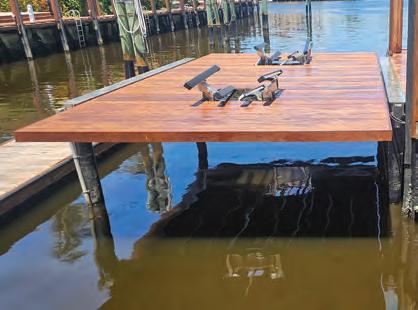
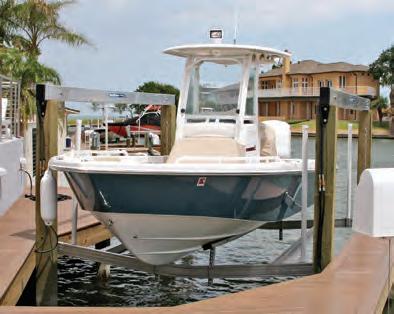


ShoreStation hydraulic boat lifts are a reliable choice for coastal residents and boating enthusiasts alike. Their strong construction, made with corrosion-resistant materials, allows them to withstand harsh environmental conditions, including sun, storms, and saltwater damage. ShoreStation provides a steadfast solution for protecting waterfront investments, o ering peace of mind to owners in the Sunshine State.
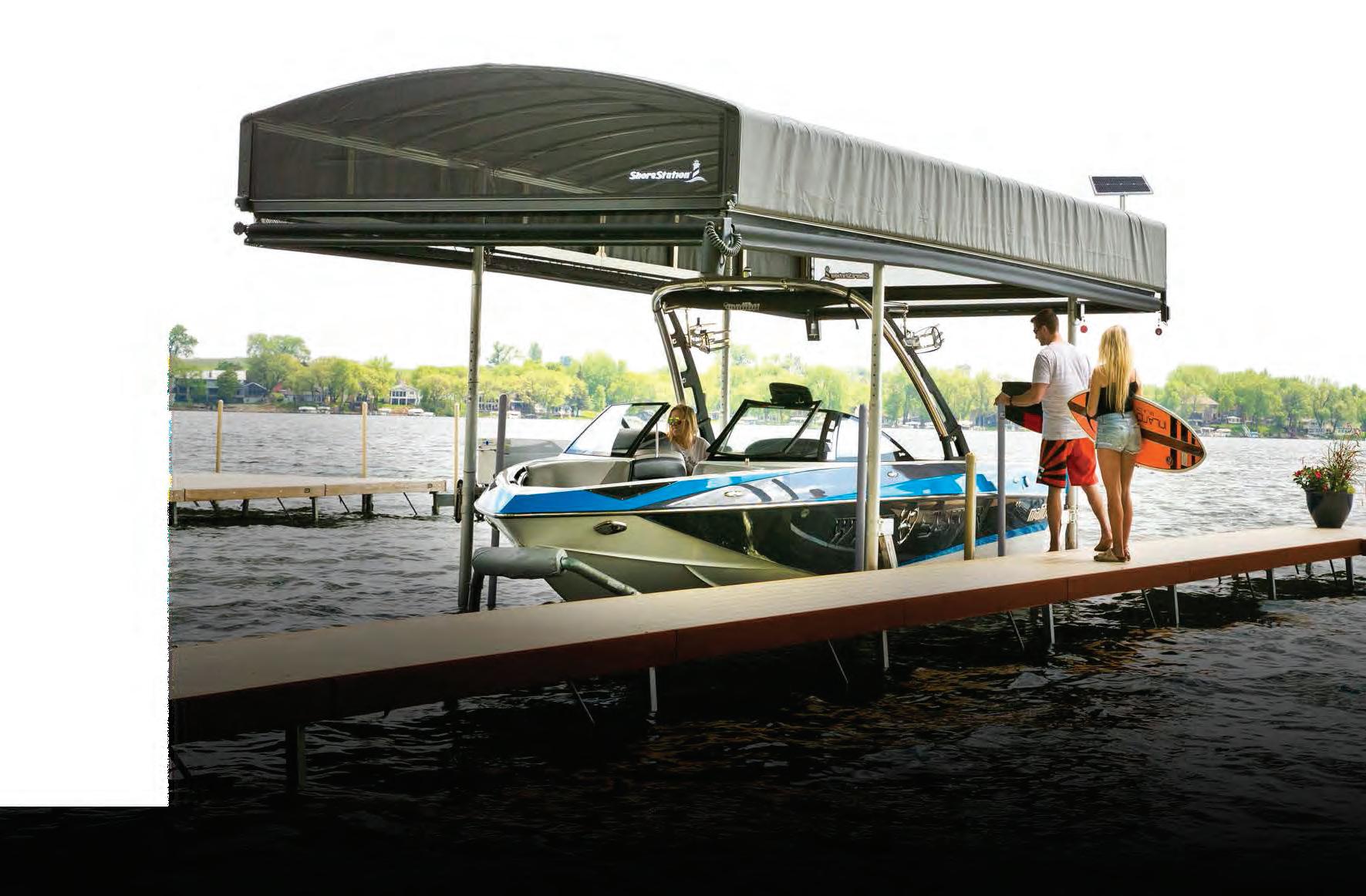

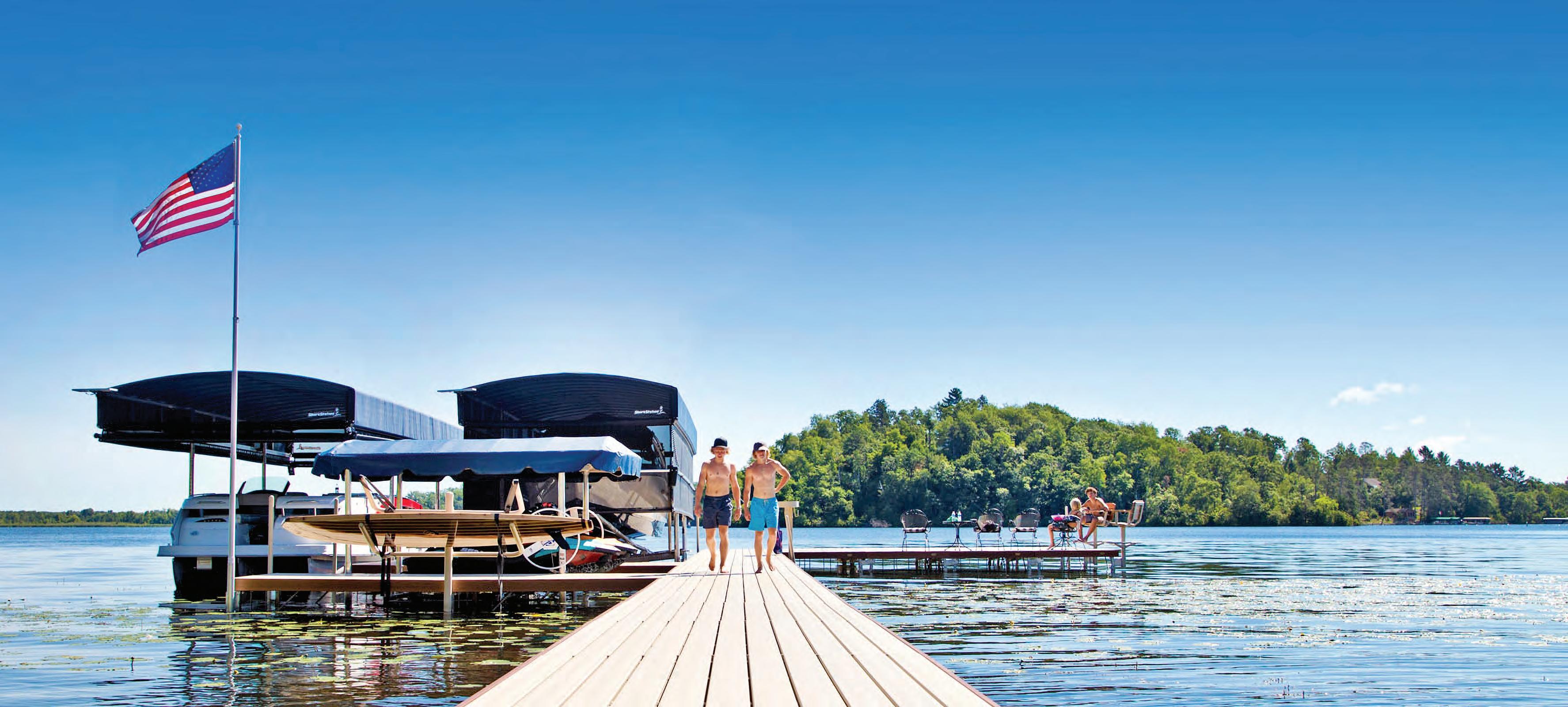


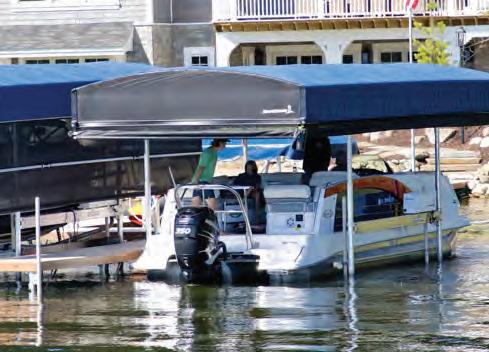
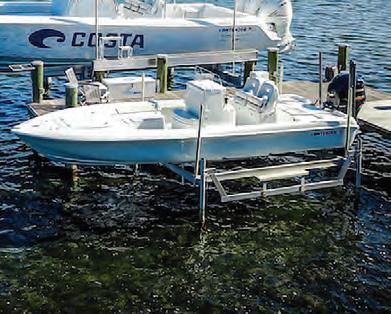
Equipped with exceptional weather resistant fabric and breathable SunTex 80 woven mesh ends for maximum protection and durability,

Made from the highest quality materials, our innovative hydraulic boat lift is one of the fastest and safest lifts on the market today. When you have a hydraulic lift, there’s no need to worry about wind and waves getting in your way. This lift will give you con dence to safely land and secure your boat in less-than-ideal conditions.
Never miss another moment on the water. Power your lift with clean, free solar power. Our speedy 20 watt charger features solar regulator drainage protection, saving your battery from permanent damage caused by overcharging.



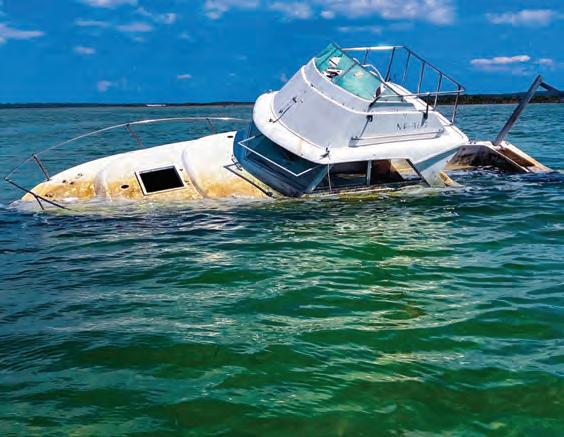
The Florida Fish and Wildlife Conservation Commission (FWC) is preparing to implement a new law aimed at strengthening vessel accountability and enhancing protections for Florida’s waterways. Senate Bill 164, signed into law by Governor Ron DeSantis on June 19, went into e ect on July 1, 2025. is legislation is designed to help reduce the number of at-risk and derelict vessels across the state and improve enforcement tools for FWC o!cers and partner agencies. Key provisions of the new law include:
• Clari ed Ownership Standards: e de nition of “vessel owner” is clari ed, and a valid vessel title will now serve as prima facie (presumed) evidence of ownership.
• Stronger Requirements for At-Risk Vessels: Vessel owners must now complete an E ective Means of Propulsion (EMP) evaluation upon request by law enforcement. If an o!cer has reason to believe the vessel lacks an e ective means of propulsion and the owner is present, the evaluation must be conducted immediately or within 48 hours if noti ed otherwise.
• Public Nuisance Vessel Designation: A vessel may now be declared a public nuisance — subject to removal like a derelict vessel — if the owner
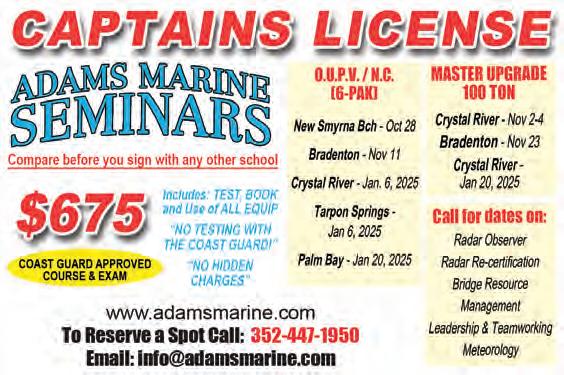
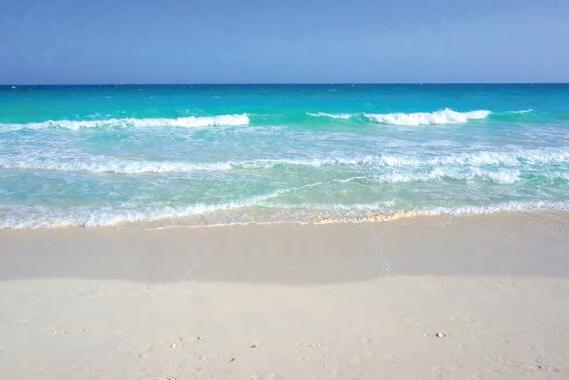


receives three citations related to any at-risk conditions within a 24-month period, including unpaid citations or failures to appear in court.
• Expanded Noncriminal Infractions: Violations such as expired registration and long-term anchoring may now be addressed through mailed noncriminal citations from law enforcement.
• More Flexible Use of Removal Funds: Derelict Vessel removal funding may now be used not only for removing DVs but also for preventive removals under the Vessel Turn-In Program and for public nuisance vessels.
• Harsher Penalties for Repeat DV O enders: First o ense - First-degree misdemeanor; Second o ense - ird-degree felony; ird o ense - Seconddegree felony.
• No Liveaboard on Derelict Vessels: It is now a rst-degree misdemeanor to live aboard a vessel that has been declared derelict by the court or the owner has not requested an administrative hearing.
“We have seen increasing success in our e orts to combat the ongoing derelict vessel problem in Florida’s waters,” said Capt. Travis Franklin, leader of the FWC Derelict Vessel Removal and Prevention Program. “ is new legislation enhances our e orts to not only remove derelict vessels but also prevent at-risk vessels from becoming derelict.”
Derelict vessels remain a priority for the FWC, and the multi-year initiative to reduce the number of derelict vessels on Florida’s waterways is ongoing. ese vessels pose serious risks to seagrass beds, marine life, navigation, public safety and property. e Boating and Waterways Section is leading this statewide e ort in partnership with local governments and law enforcement.
Leaving a vessel in a derelict condition is a crime. Derelict vessels, including those that are sinking, grounded, stripped or lacking vital systems, threaten both people and Florida’s natural resources.
FWC has removed nearly 200 vessels through the Vessel Turn-In Program and is actively taking applications from at-risk vessel owners. Vessel owners can call VTIP specialists at the FWC for more information on the program at 850-488-5600 or visit the VTIP website at MyFWC.com/boating and click on “Vessel Turn-In Program” on the second slider at the top of the page.
For more information on derelict or vessels at risk of becoming derelict, visit MyFWC.com/Boating and select “Waterway Management” followed by “Derelict Vessel Removal Program.”
Florida Fish and Wildlife
Conservation Commission (FWC)
O!cer Wil Raker certi ed a new state record spotted bass, caught by angler Joe Durden from Blountstown.
e sh weighed 3.93 pounds and measured 18.25 inches in length.


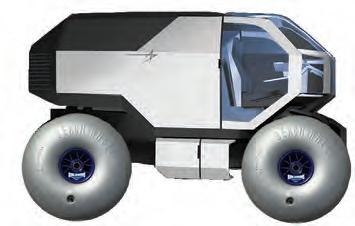


Durden was excited to catch his spotted bass on the Apalachicola River during the Fi h Annual Liberty County Bulldog Booster Bass Tournament out of Bristol Landing.
“I knew right away this was potentially a state record,” said Durden. “ is was the biggest spotted bass I had ever seen on the river.”
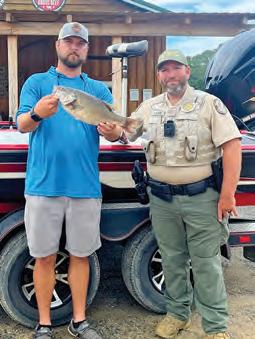
Durden, an avid bass tournament sherman, caught his spotted bass on a crankbait while using LiveScope technology. A er landing the sh, an FWC freshwater sheries biologist met with Durden to discuss his catch and verify it was a spotted bass.
“Catching a state record sh is a tremendous accomplishment for any angler,” said Andy Strickland, sheries biologist with FWC’s Fish and Wildlife Research Institute. “Particularly a record that’s held the test of time for 40 years.”
e previous spotted bass state record was 3.75 pounds, caught by angler Dow Gilmore on June 24, 1985, on the Apalachicola River.
Anglers can check state records by visiting MyFWC.com/Freshwater and clicking on “State Record Fish.”
It’s no fsh tale when you run with a John Deere. You can get everything done faster and easier, so you get more time on the water. Plus, our special offers make them the catch of the day.



The boating industry is jumping onboard with Dometic’s revolutionary DG3 Gyrostabilizer, due to its groundbreaking spin-up and spin-down times, energy e%ciency and superior performance in all types of sea conditions. is solution has literally taken vessel stabilization to a “Whole New Level,” capturing the attention of boaters and boat builders around the world. e !rst in a planned line of advanced stabilization solutions by Dometic, the new DG3 is targeted at the 35- to 41-foot !shing boat market.
Soon a er Dometic won the 2025 NMMA Innovation Award at the Miami International Boat Show for the DG3, leading American boat builder Regulator Marine announced that its new-for-2025 Regulator 35 Center Console would be o ered with Dometic’s DG3. “We are honored to have a respected builder like Regulator come onboard,” said Dometic Marine Segment President Eric Fetchko. “ eir latest center console agship is an ideal match for our system in terms of size, hull performance, overall quality and a wide range of premium features and technology. It’s also a wonderful platform to showcase our advanced capabilities, including energy e%ciency that enables o shore use without the need for an onboard generator,” added Fetchko.
e DG3 reduces spin-up time by more than 65%, reaching full readiness in just 16 minutes, compared to the typical 50 minutes required by current systems in the market. is means you’ll
get out on the water and out to distant !shing grounds faster. e system’s downtime is equally impressive, fully lowering in just 20 minutes, a signi!cant improvement over the eight or more hours (15X faster) required by current systems.
Dometic also pioneered innovations in energy storage and recapture, enabling the battery to recharge e%ciently. DG3 uses Dometic’s proprietary, industry-proven Inverted Roller Screw technology for true dynamic control and signi!cantly improved roll reduction performance over a wide range of sea sates. In addition, the push-pull motion of Dometic’s all-electric procession actuator is used to create power that contributes to running the system. During spin down, Dometic’s regenerative braking technology recharges the system’s dedicated 48V Lithium-Ion spin-up battery for the next use. Overall, the DG3 reduces power consumption by an impressive 40% compared to other gyros on the market.
DG3’s Inverted Planetary Roller Screw technology and proprietary all-electric procession actuator provide dynamic control of the gyro hemisphere for instant response to vessel movement and superior comfort over a full range of sea states. is allows DG3 to react faster to heavy wave motions, while also smoothing the ride in small and long period waves, where current gyros are less e ective.
Durability and reduced maintenance were also key goals for Dometic engineers. Dometic’s


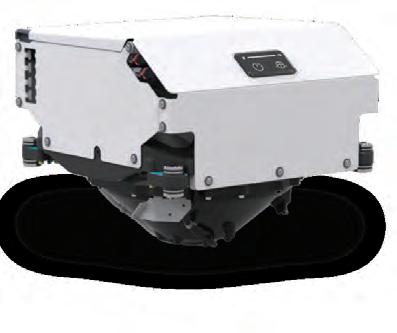
durability, minimizes required service, and reduces total cost of ownership. Featuring a slower-spinning ywheel, larger, more robust bearings, patentpending inner race cooling, parallel path cooling, and a titanium heat exchanger, the DG3 is designed to stay cool and operate reliably for the long run.
Dometic designed the DG3 as an easy “dropin” replacement for other comparably sized systems available in the market today. e DG3 !ts within the same footprint and clearance speci!cations and features reversible mounting feet to address common challenges encountered by installers. To meet the needs of today’s boating market, Dometic’s DG3 is compatible with 12-, 24- and 48volt house battery systems.
To learn more about how Dometic’s DG3 can take your o shore shing adventure to a whole new level, visit www.dometic.com.





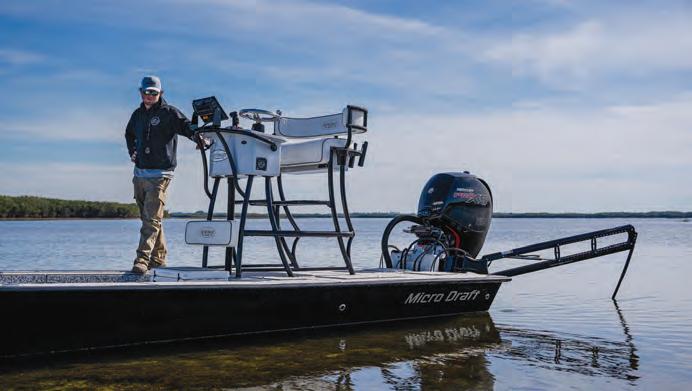



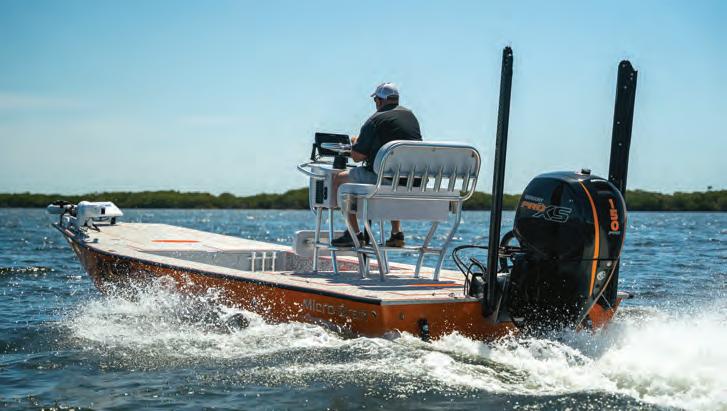
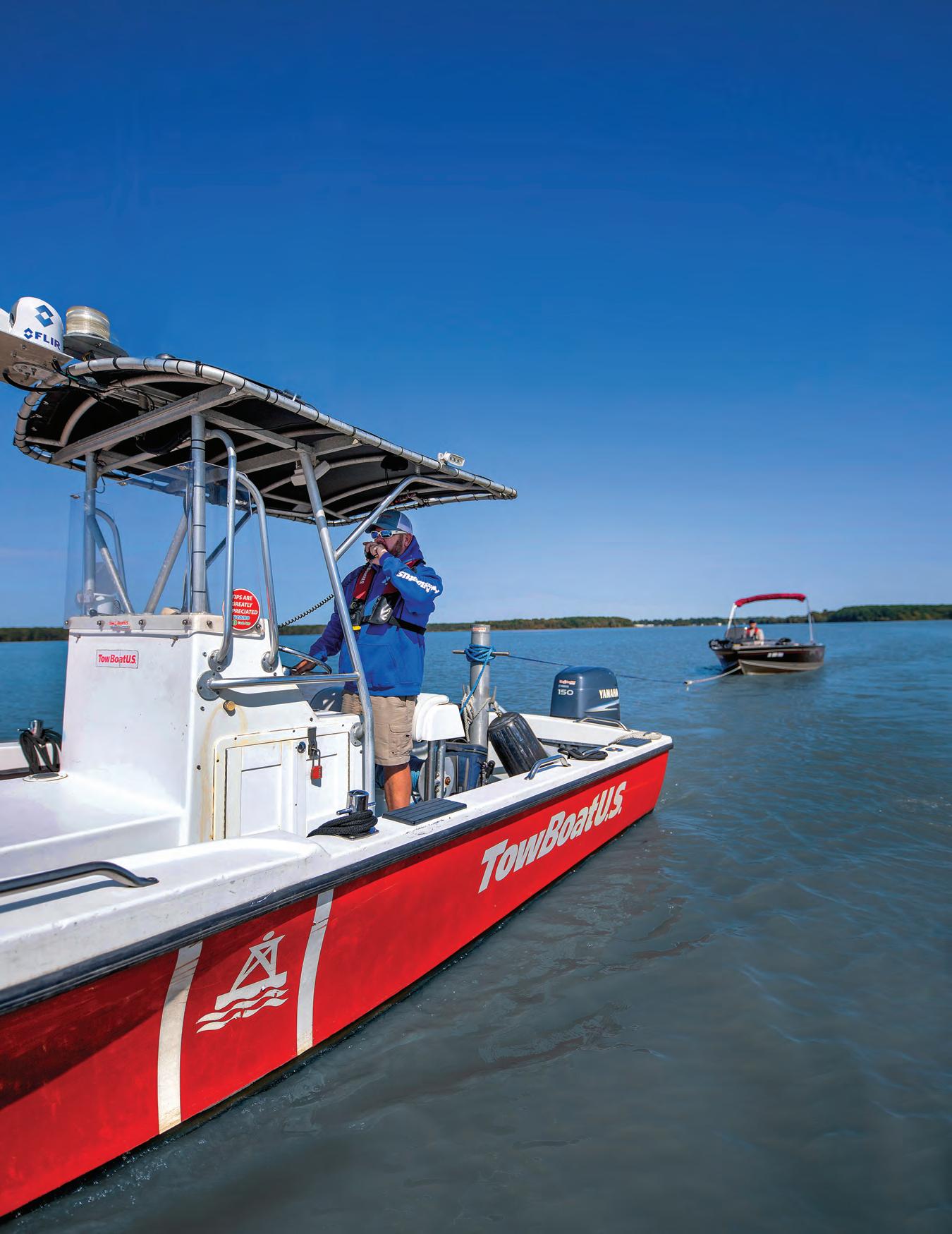



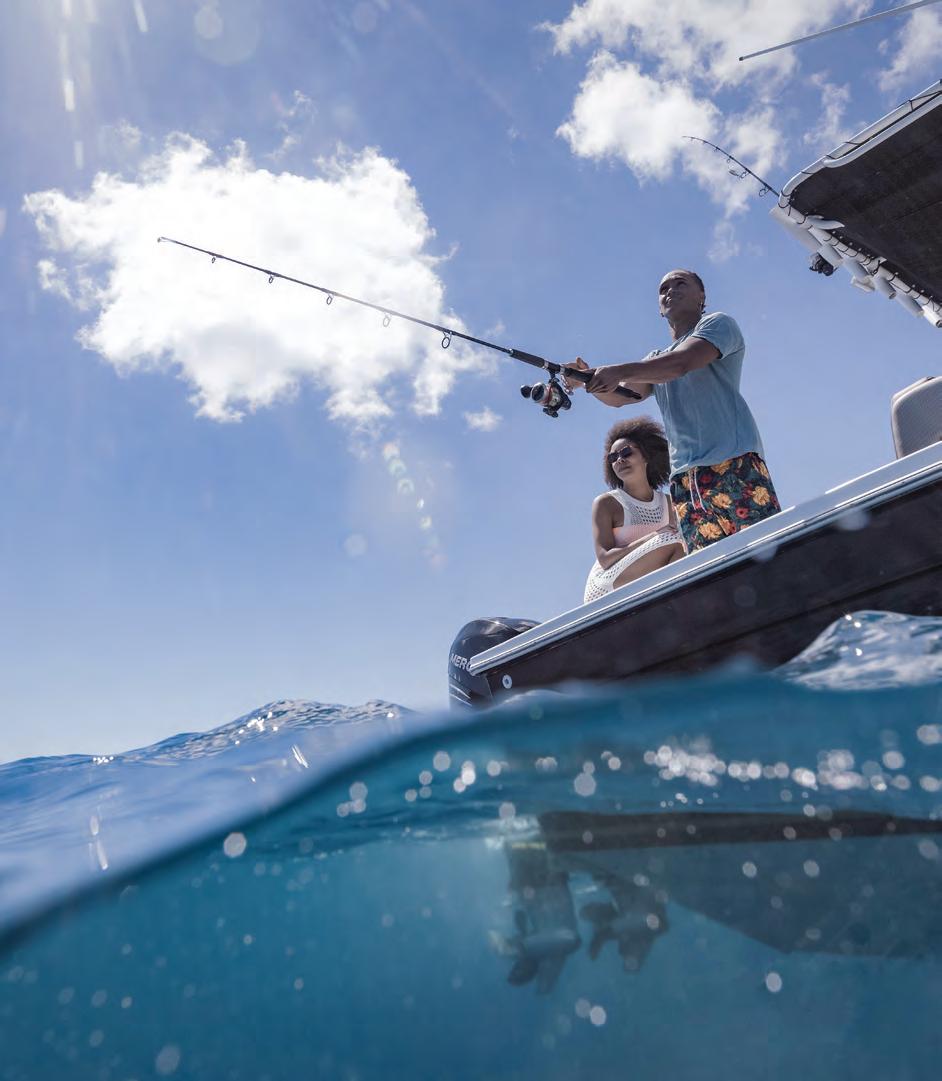
Nestled in the heart of the Caribbean, the US Virgin Islands embody a harmonious blend of natural beauty, cultural vibrancy, and laid-back serenity. ese islands are more than just a picturesque getaway; they are a living testament to nature’s rhythm and resilience, e ortlessly in tune with the world around them.
With no passport required for U.S. citizens, from the moment you arrive, the islands’ natural rhythm is palpable. e gentle sway of palm trees, the soothing sound of surf crashing against sandy shores, and the vibrant melodies of local music all echo the heartbeat of this tropical paradise. e islands’ lush landscapes, with their verdant hills and crystal-clear waters, mirror the steady pulse of life that sustains the local ecosystems and communities alike.
e US Virgin Islands’ environment is a symphony of biodiversity with world class shing and diving. ese natural elements are not static; they dance in harmony, in uenced by the tides, wind, and seasonal changes—further emphasizing the islands’ intrinsic rhythm. is delicate balance underscores the importance of conservation e orts, ensuring that future generations continue to experience the islands’ natural cadence.
Culturally, the US Virgin Islands are equally in tune. e music, dance and festivals re ect a vibrant heritage rooted in African, European and Caribbean traditions. e spirited calypso beats
and reggae rhythms are expressions of life's ongoing dance—celebrating resilience, community and joy. ese cultural expressions are an extension of the islands’ natural rhythm, showcasing how human life here moves seamlessly with nature’s ow.


In a world o en dictated by chaos and rapid change, the US Virgin Islands serve as a reminder of the beauty of being in sync with nature’s tempo. eir natural, cultural and ecological rhythms o er
a blueprint for sustainable living and harmony. As travelers and residents alike continue to embrace this rhythm, they uphold a legacy of balance—one that celebrates life’s natural ow and the enduring spirit of these remarkable islands. In the US Virgin Islands, being in rhythm isn’t just an ideal; it’s a way of life.

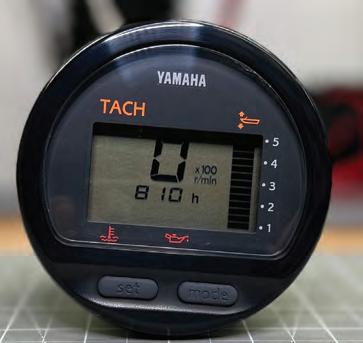

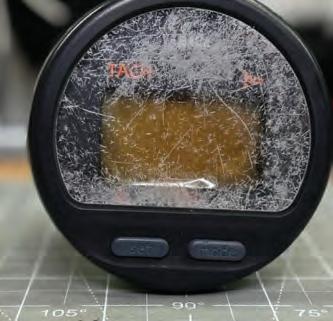


In some parts of the country the bass spawn is already starting to come to an end like it is down here in Florida and others may not start up for another couple months. Regardless of your phase, this post spawn !shing tip should help you dial in your !shery when the time is right for you! One thing is the same for every !shery and every species of bass a er they spawn, they are hungry! is can create some awesome and fun !shing opportunities that have led me to some of my best days on the water.
Typically a er the largemouth bass spawn, there are other !sh that will then begin their spawn. I’m not a scientist, but I’m sure this has a lot to do with the speci!c timing of why the bass do their thing when they do. In most areas of the southern United States, I know that the bluegill and o en times the shad, if they are in your lakes, will start to spawn very shortly a er the bass !nish up. Bass will use every advantage they can when these bait!sh group up to feed back up a er a long couple weeks or months protecting their eggs in the shallows and this can make for some fun !shing.
Smallmouth bass and spotted bass are very similar as well in the aspect of taking advantage
TYLER WOOLCOTT

of bait schools when they get in that post spawn phase. I have seen them group up and attack shad, perch, alewife schools and any other bait that is readily available to them. Typically I do a lot of my searching for these things with my electronics and forward facing sonar which is a very helpful tool for learning !sh activity and seeing what’s going on under the surface of the water.
Most of the time you can use clues you can visually see with your eyes to help you !nd this feed that is going on. Typically birds feeding on the water is an awesome sign of a feeding frenzy and that is one thing I ALWAYS look for. Also always keep your eyes peeled for !sh blowing up on the surface or shad ickering as well. Sometimes the very smallest clue can lead you to much larger picture. Birds standing on speci!c banks, the sound of bluegill popping around vegetation, anything that clues you in to bait in the area usually means the bass aren’t very far.
Hopefully this tip will help you when the !sh in your area get into the post spawn feed! Find the bait, you will !nd the bass! I always try to duplicate the bait!sh with whatever kind of lure you are throwing. Bluegill eaters - I will
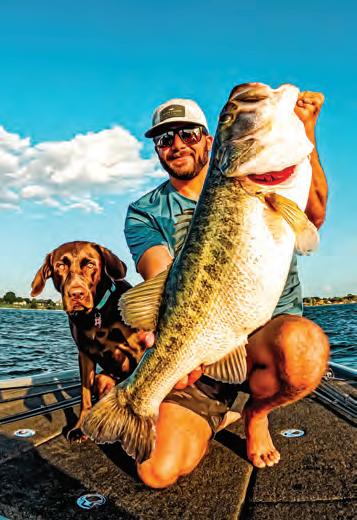
throw a frog or a swimming in bluegill colors, etc. Shad eaters - I will throw white or silver topwaters and crankbaits, etc. Always match the hatch if possible! Good luck out there this season and tight lines!
Tyler Woolcott is a professional tournament angler and guide. Check out his website at www.tylerwoolcott shing.com.


“I never expected it to be so beautiful that it takes your breath away.”
— Kaya C., on Stauer Opals
In a quaint village, nestled between rolling hills, lived a young woman with a deep appreciation for gemstones. Her grandmother gifted her a delicate cross pendant adorned with opals. "e opals shimmered with a mesmerizing play of colors, reflecting hues of blues, greens, and fiery oranges. Her grandmother shared the legend of the opals, believed to bring hope, purity, and luck to those who wore them.
Using this story as inspiration, Stauer brings you the Opal Spirit Cross Pendant. With over 2 total carats of Kyocera lab-created opals set in .925 sterling silver encased in yellow gold, this pendant is a radiant celebration of beauty and craftsmanship. Each opal captivates with a kaleidoscopic dance of fiery oranges blending into oceanic blues, streaked with flashes of vibrant green that seem to come alive with every movement. "e shimmering opals are skillfully arranged to create an enchanting, otherworldly glow, embodying the spirit of hope and harmony.
"is breathtaking combination of color and craftsmanship is available as a limited availability of

only 930 pieces, making it a rare and treasured addition to your jewelry collection. Plus, when you order today, you’ll receive the gold-!nished sterling silver chain—a $69 value—absolutely free!
Don’t miss your chance to own this exclusive tribute to timeless elegance and meaningful symbolism. Necklace Speci!cations:
• 2 ½ ctw. Kyocera lab opals and DiamondAura® accents
• Yellow gold-finished .925 sterling silver setting
18"
silver



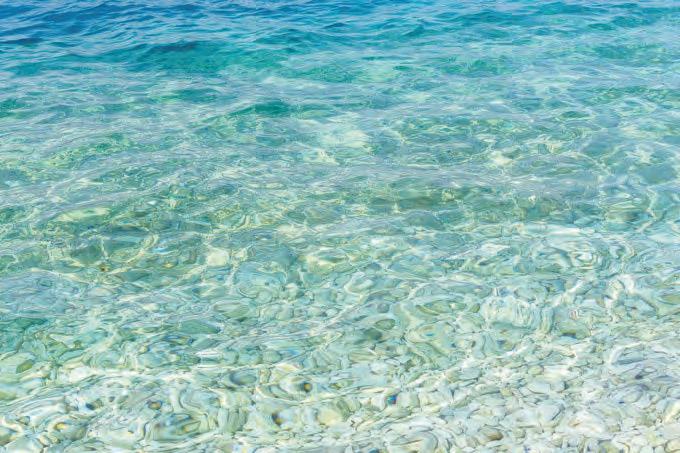




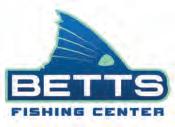


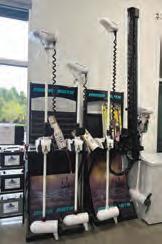

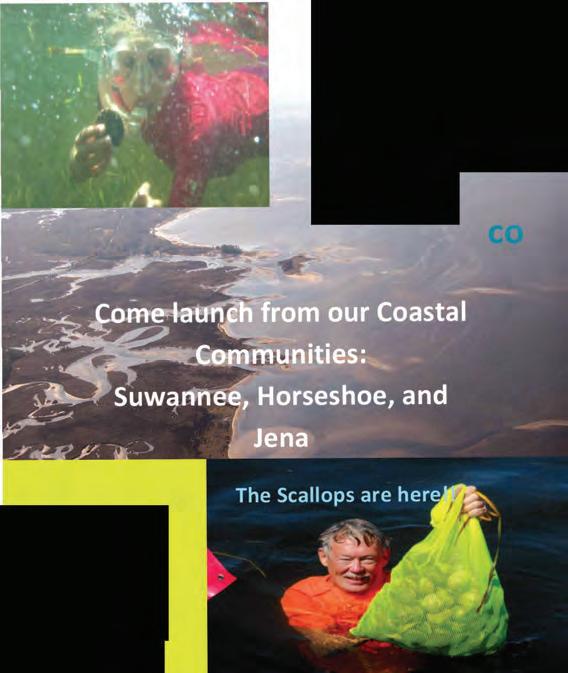



The quest to find the ultimate men’s watch has traditionally been a difficult one in the world of fashion. A timepiece with the perfect look and functionality has long been the goal of both watch designers and enthusiasts alike.
The Renegade Blue Chronograph Men’s Watch is the perfect combination of style and function. With a sleek design that features a bold blue dial, rose gold hands and hour markers, and a durable sports silicone band, this timepiece will instantly elevate any outfit.
The three sub-dials provide a precise timekeeping function. The sports silicone band is durable yet comfortable, providing a secure fit that won’t slide around on your wrist. The band is also easy to clean and maintain, making it perfect for everyday wear. The watch’s 30 Metre Water Resistance rating ensures that it has you covered whatever the occasion.
The Renegade Blue is also built to last, with a sturdy stainless steel caseback and exquisitely detailed bezel. The watch is powered by a super reliable quartz movement, which is covered by our incredible 5 Year Movement Warranty - ensuring accurate timekeeping for many years to come!

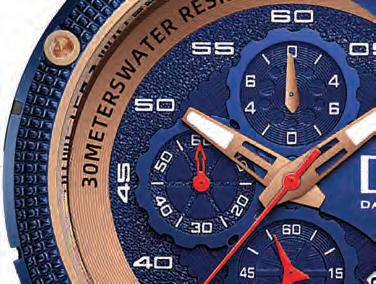

At the amazingly low price of just $99 plus S&H, this watch is an absolute steal. Don’t miss out on the chance to own the Renegade Blue and Rose Gold Chronograph Men’s Watch - order yours today!











